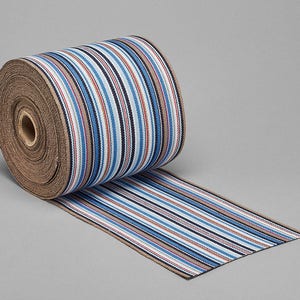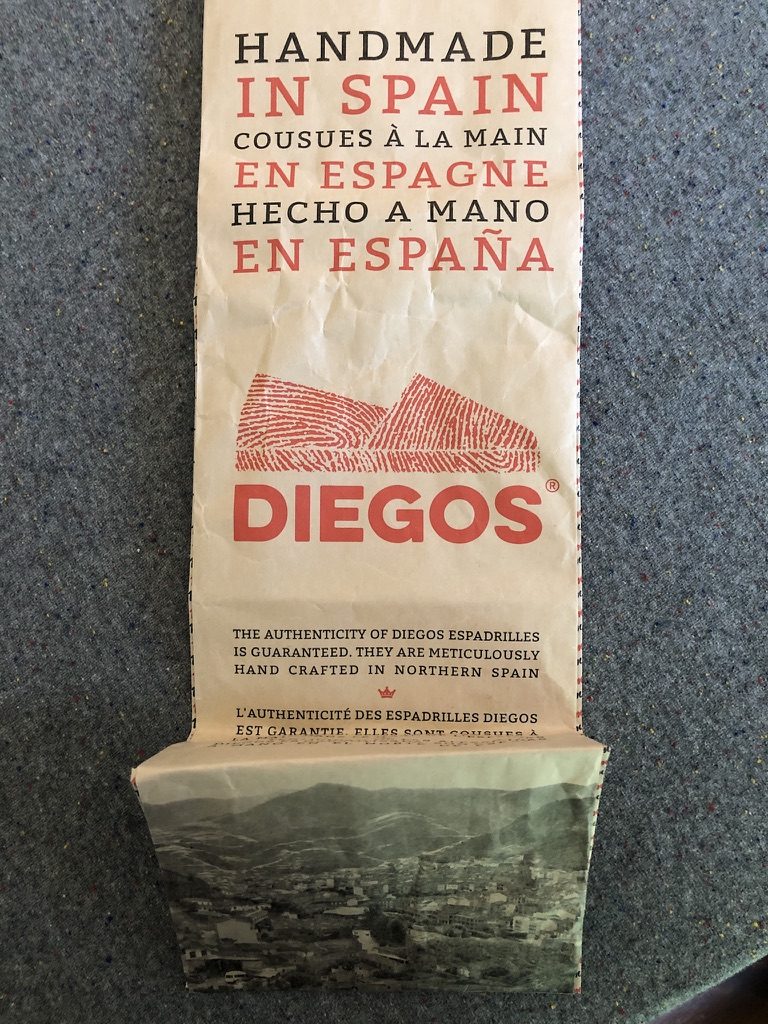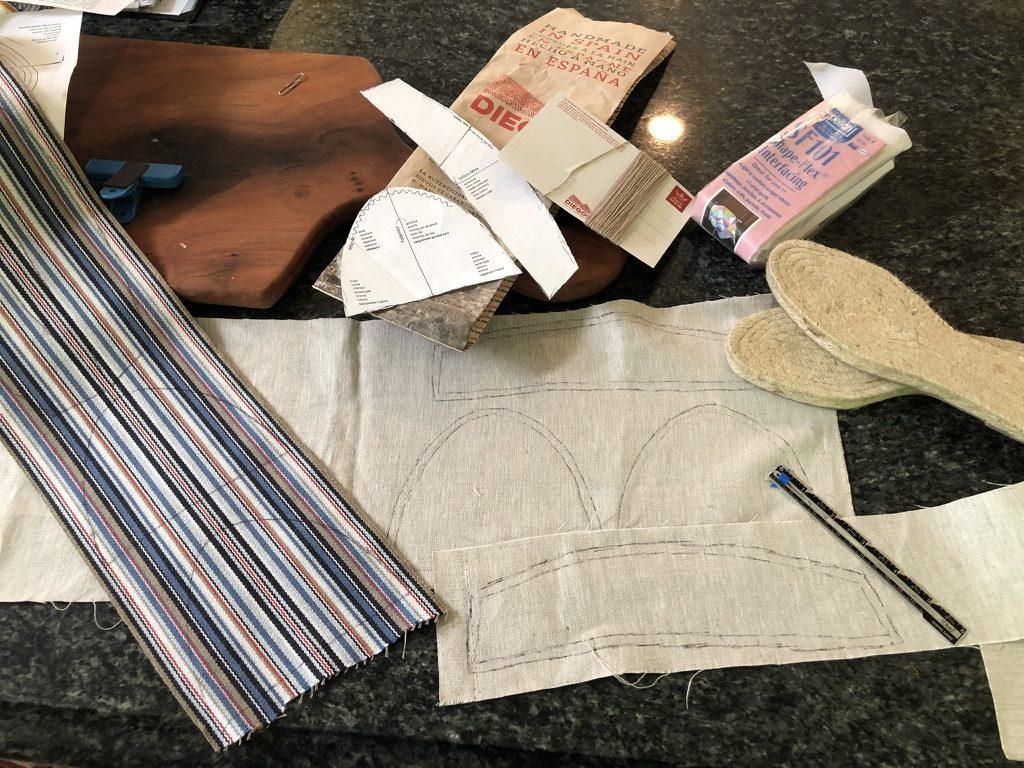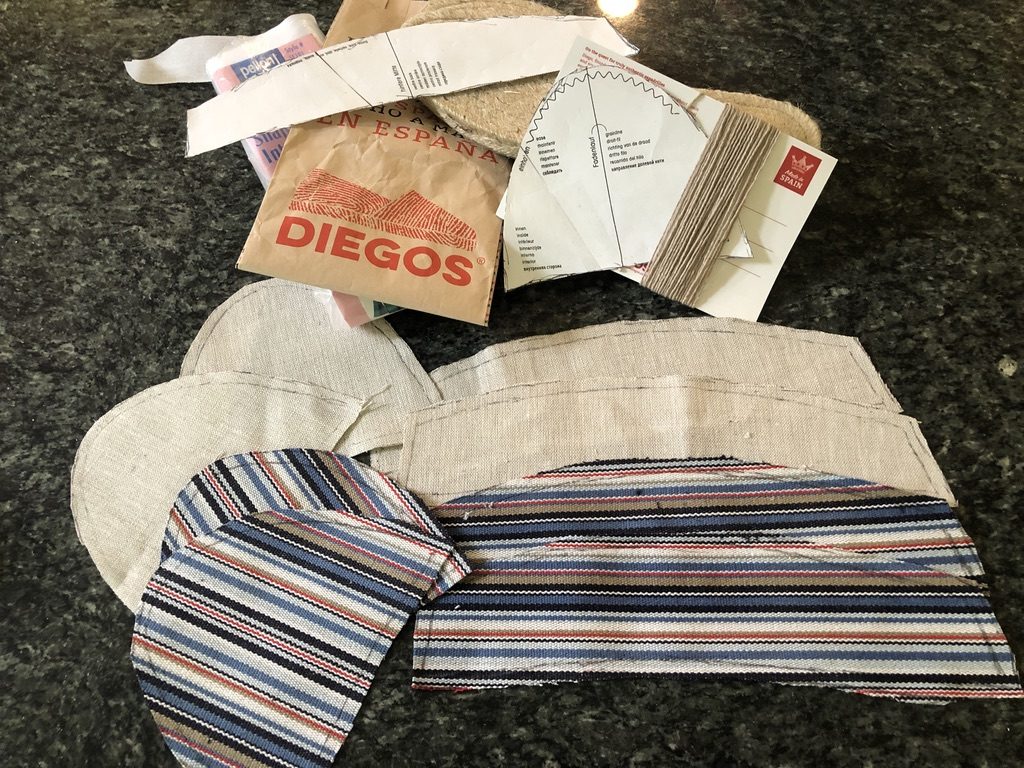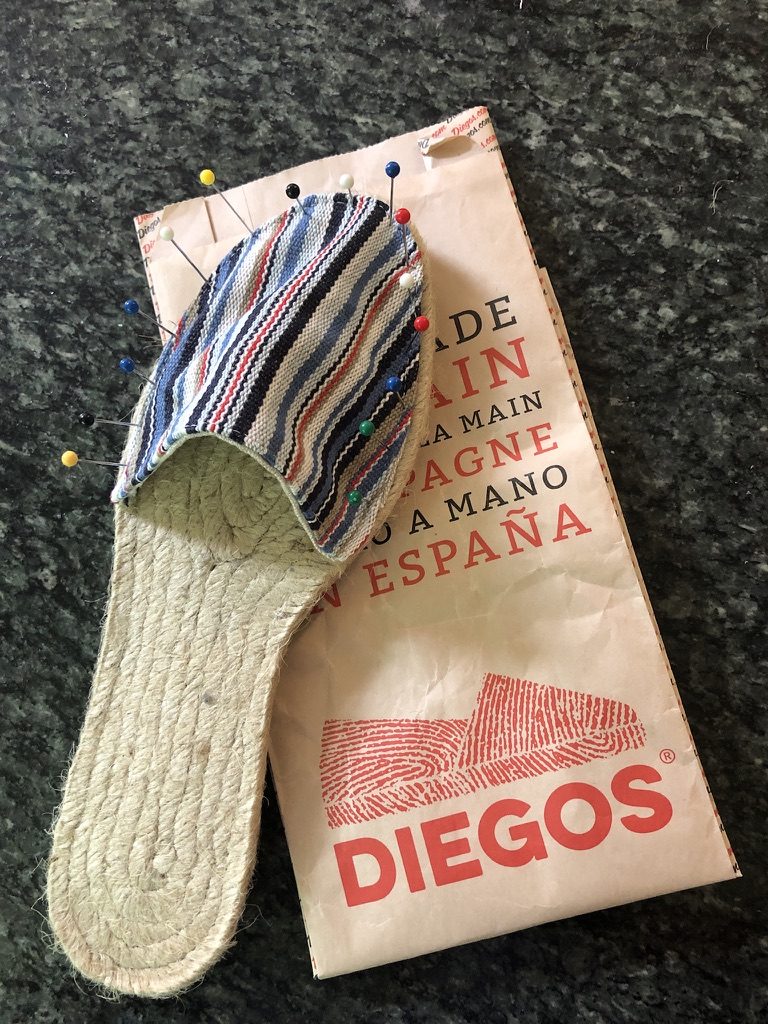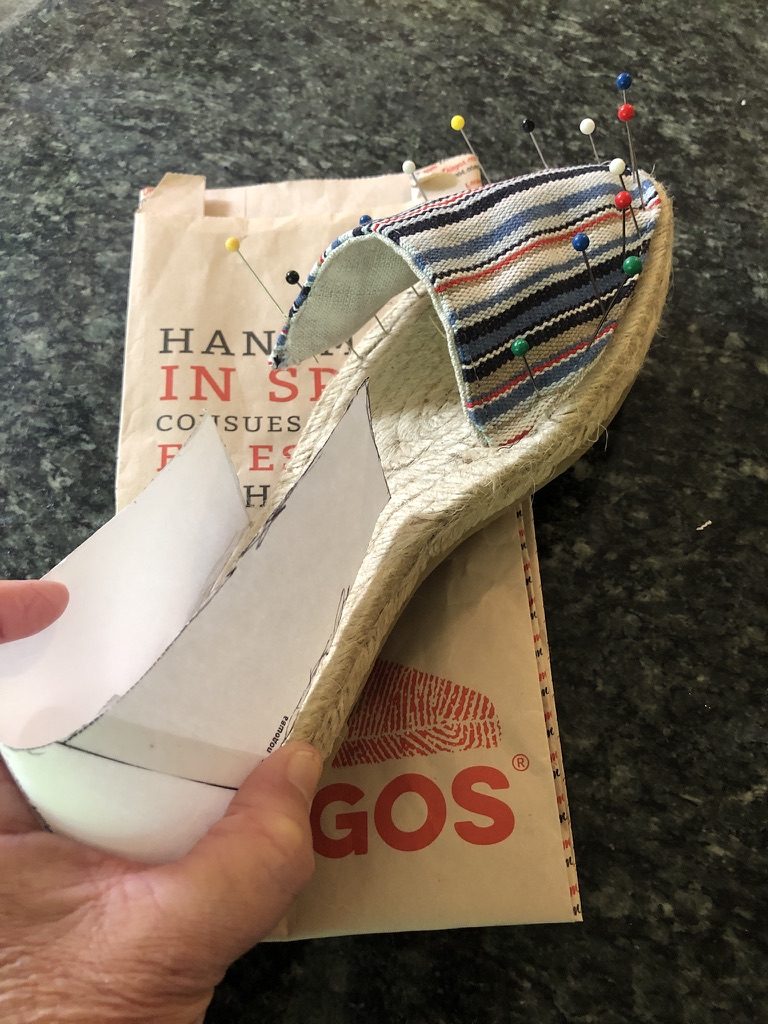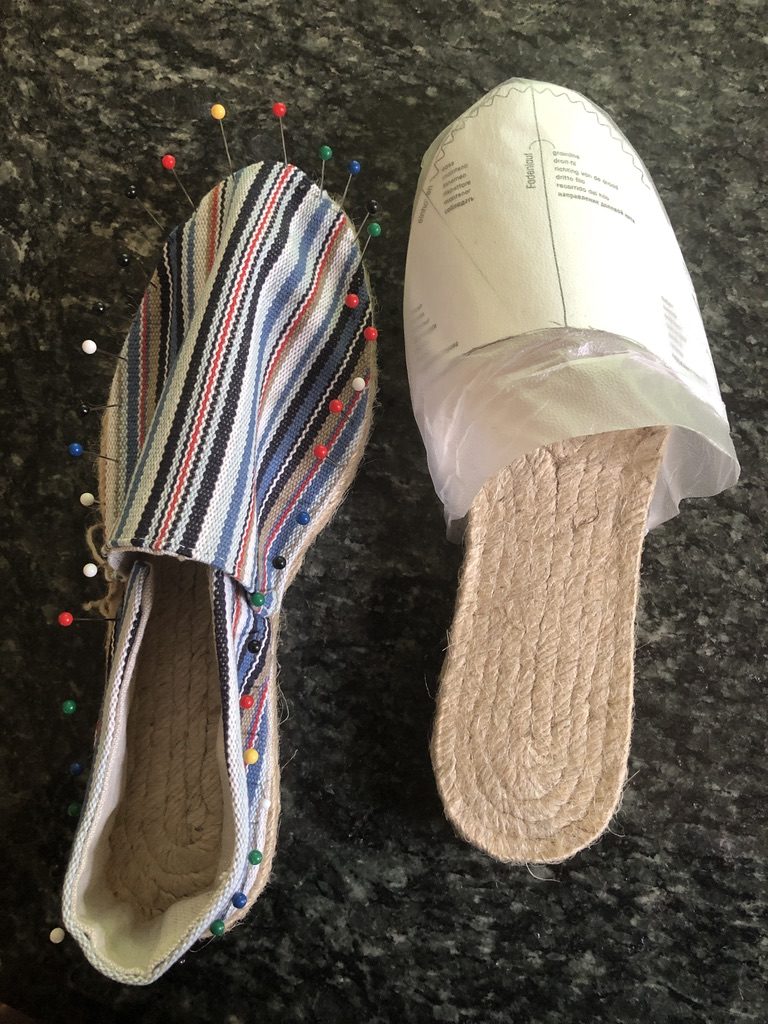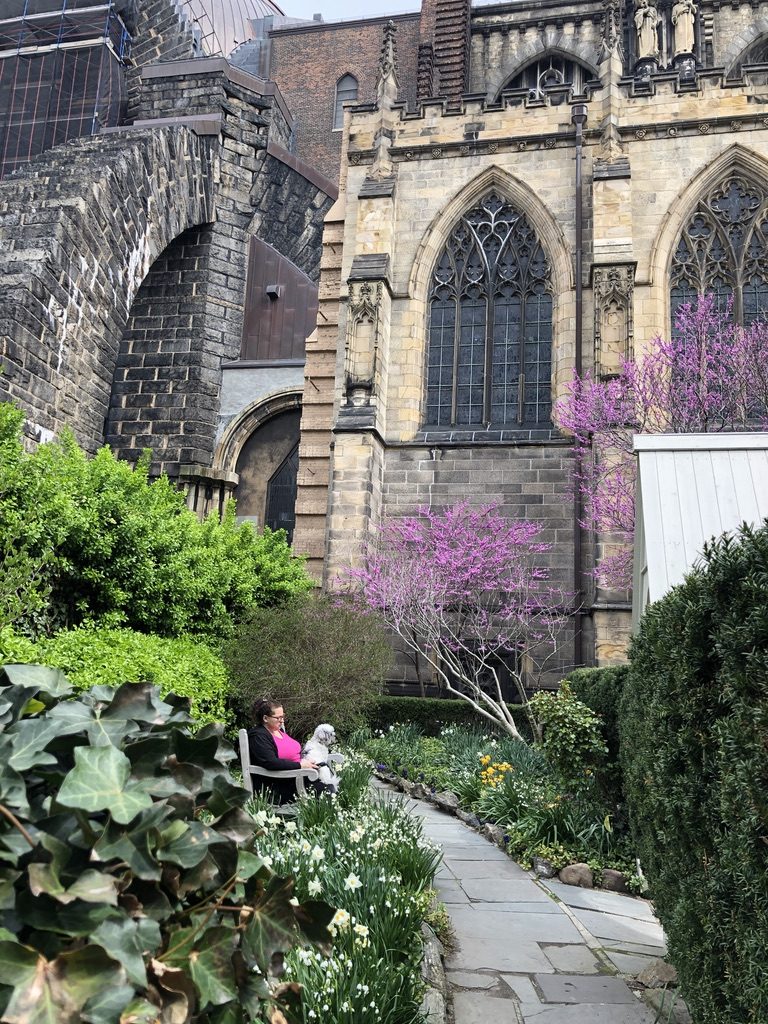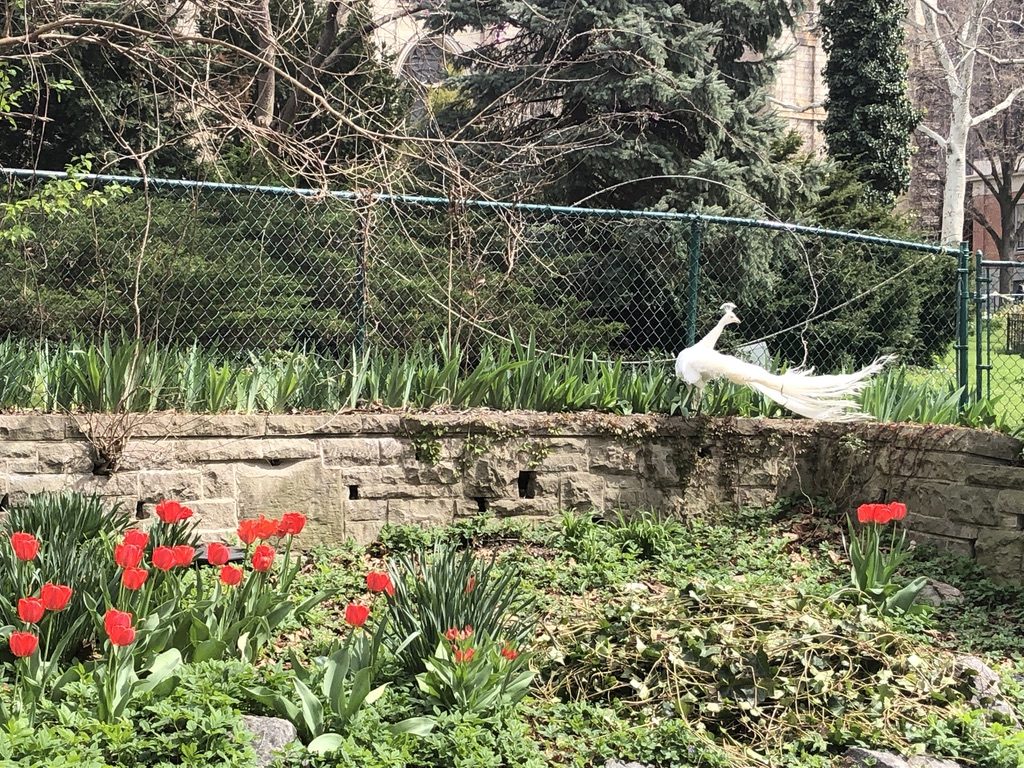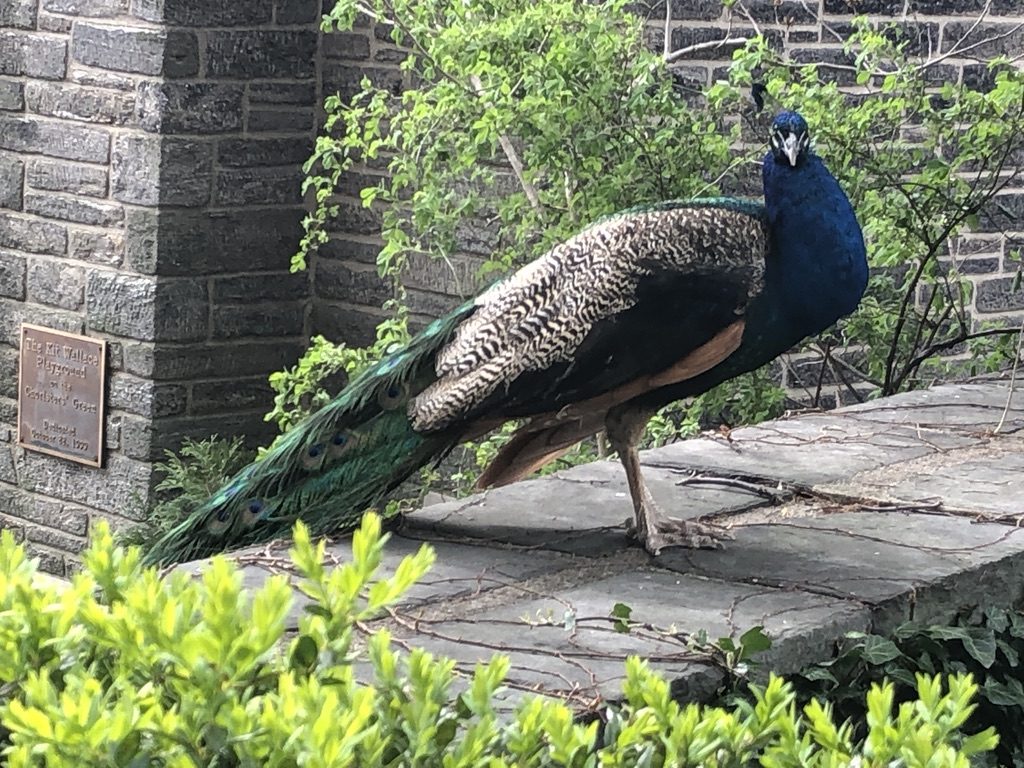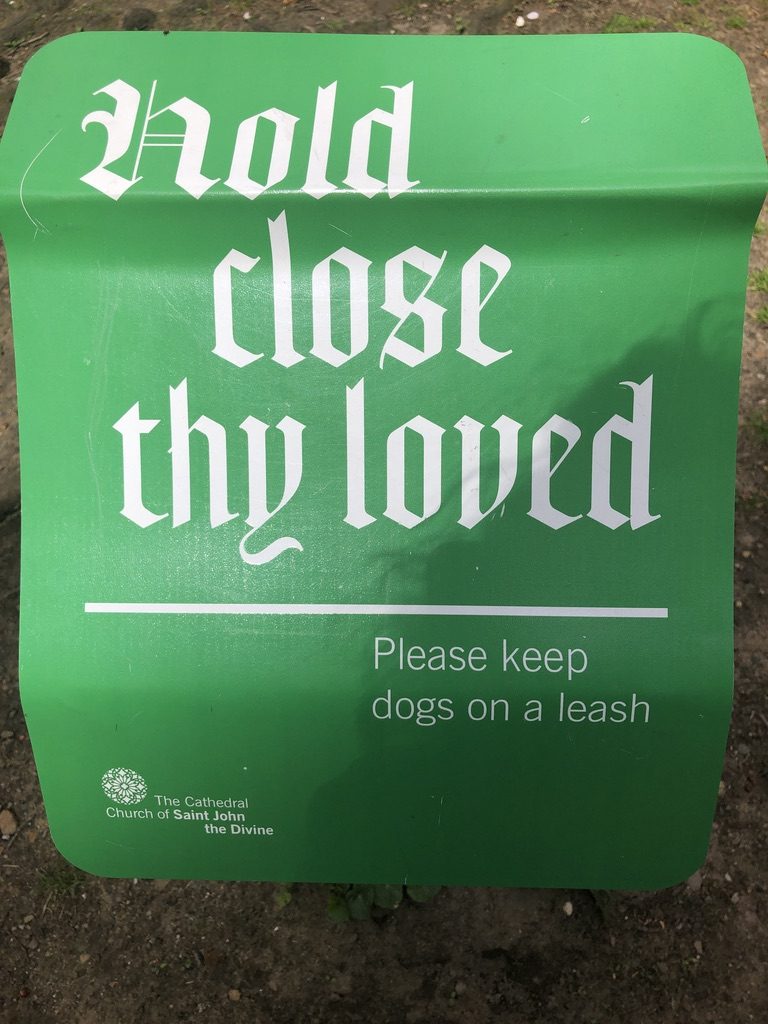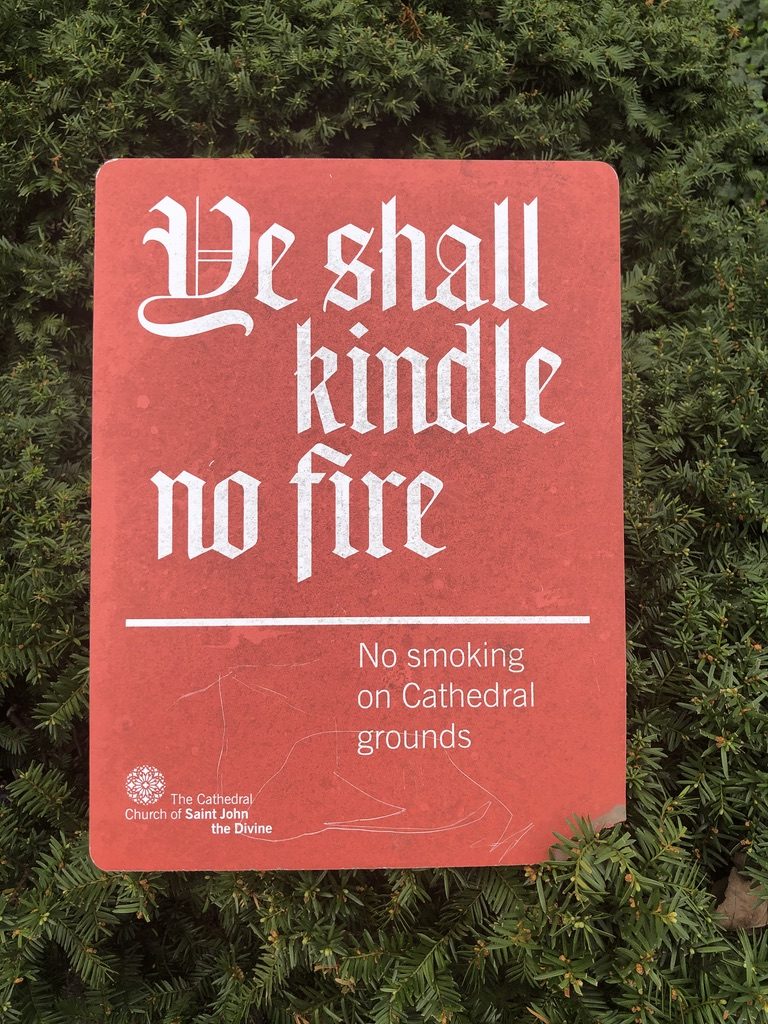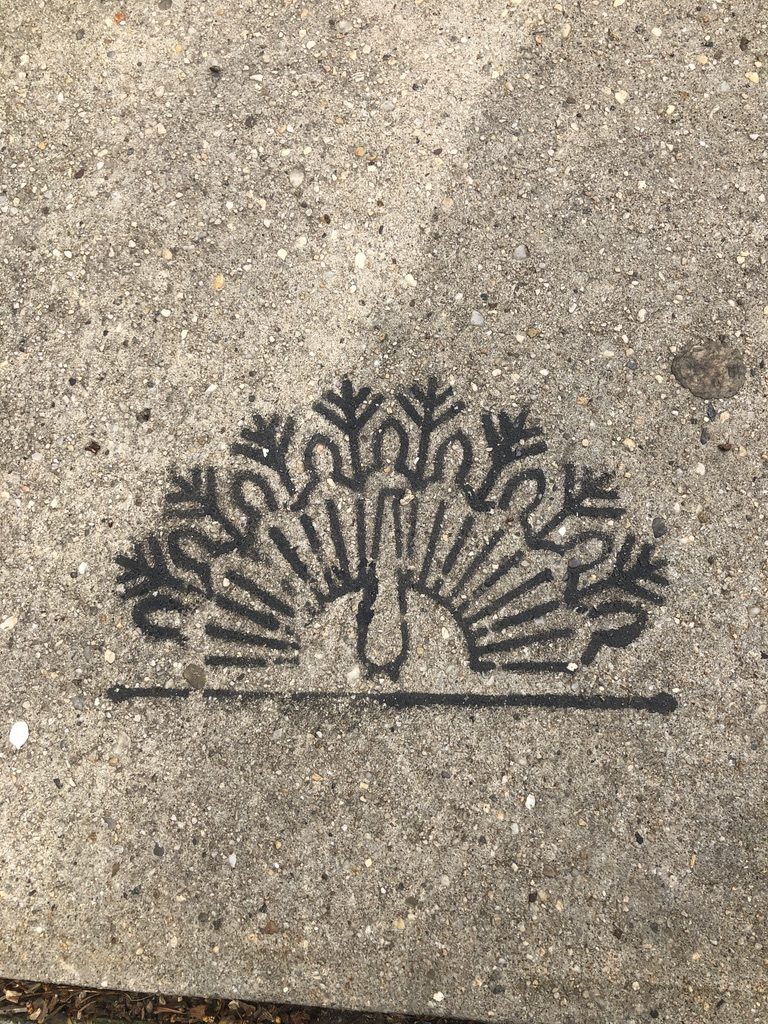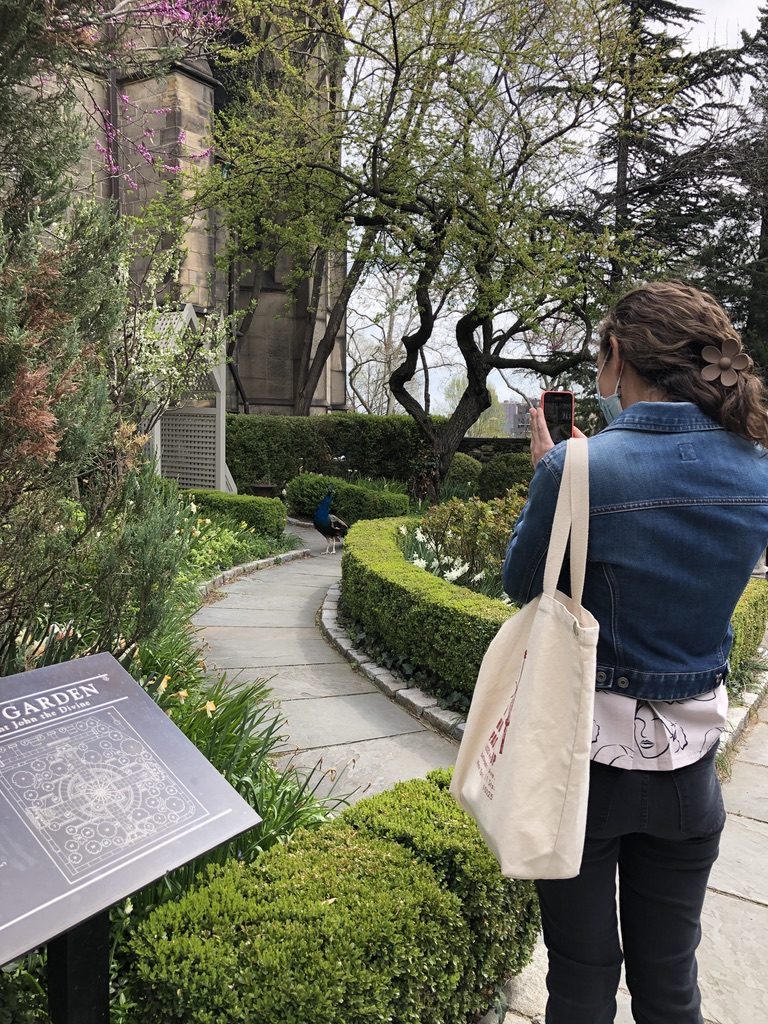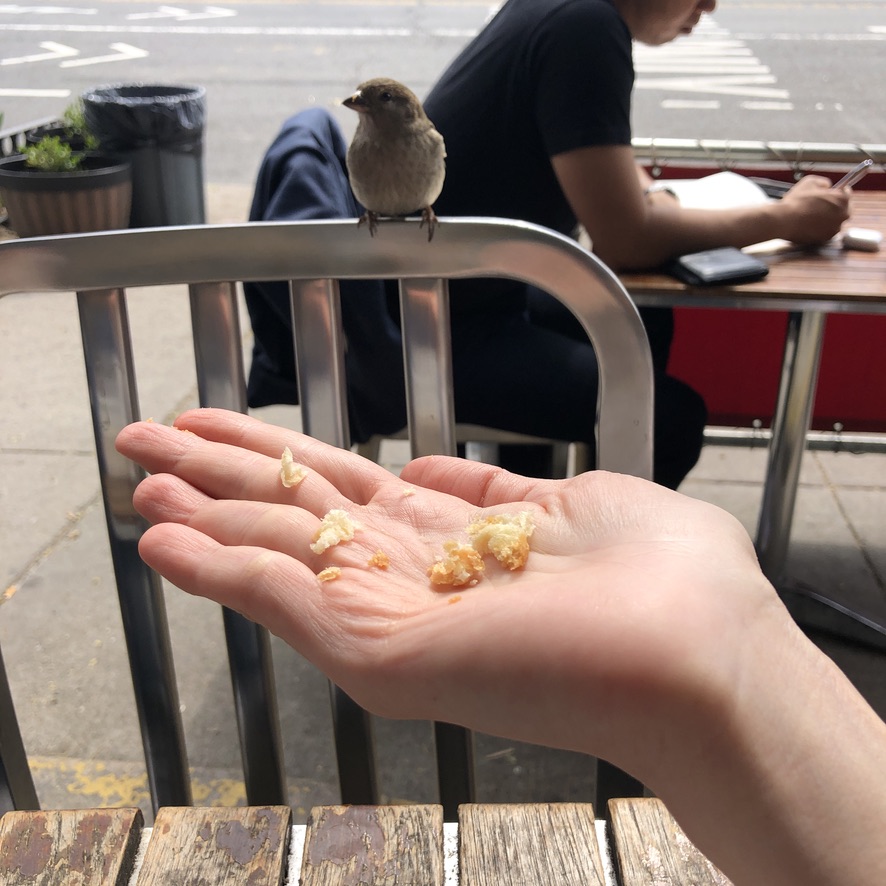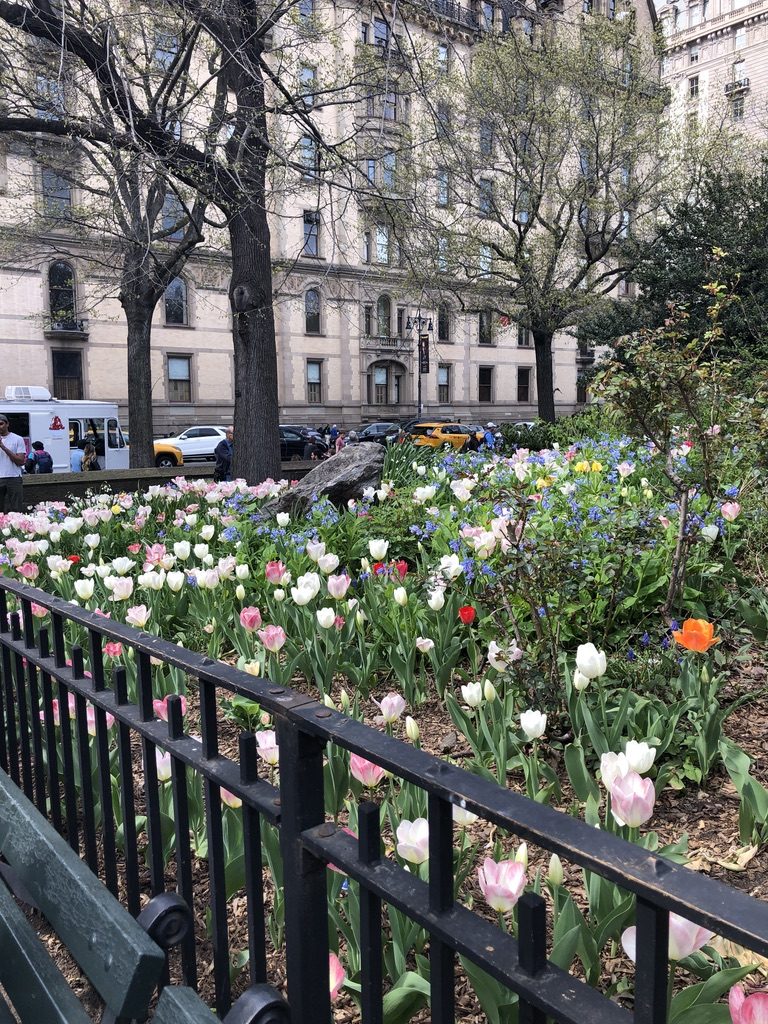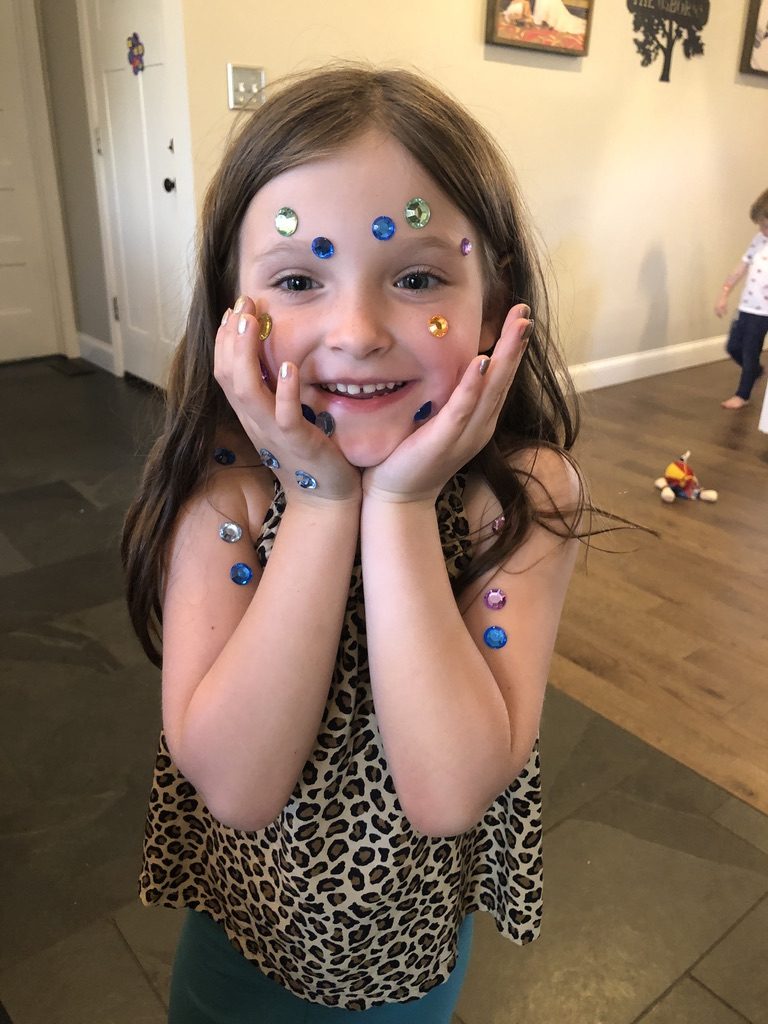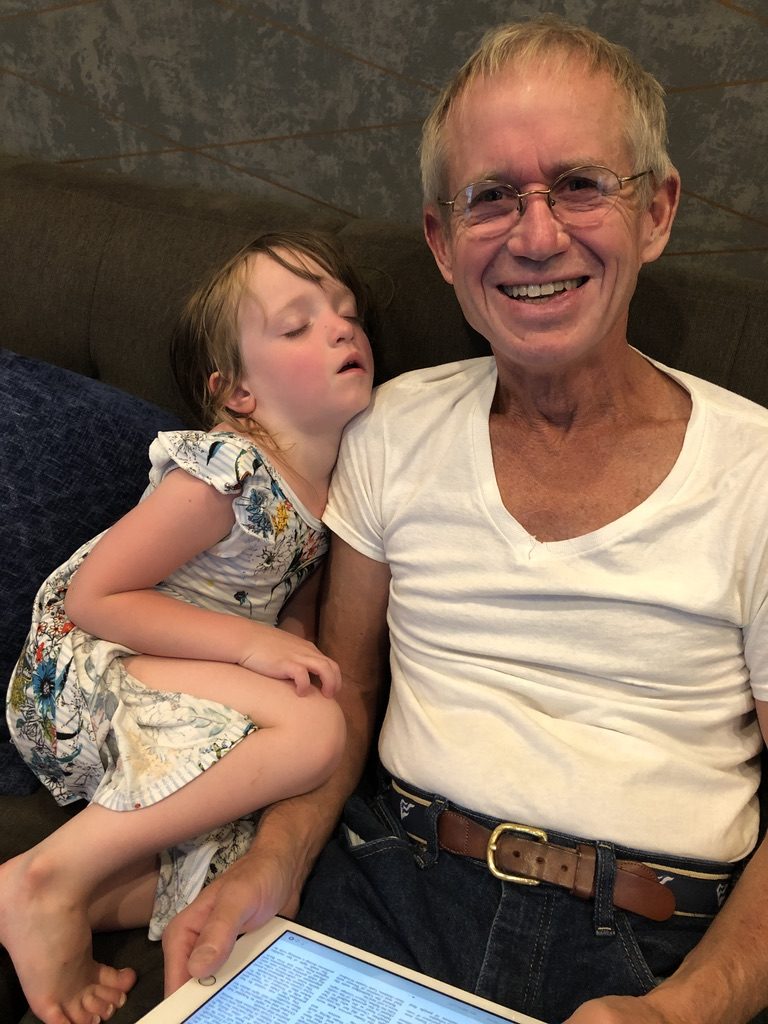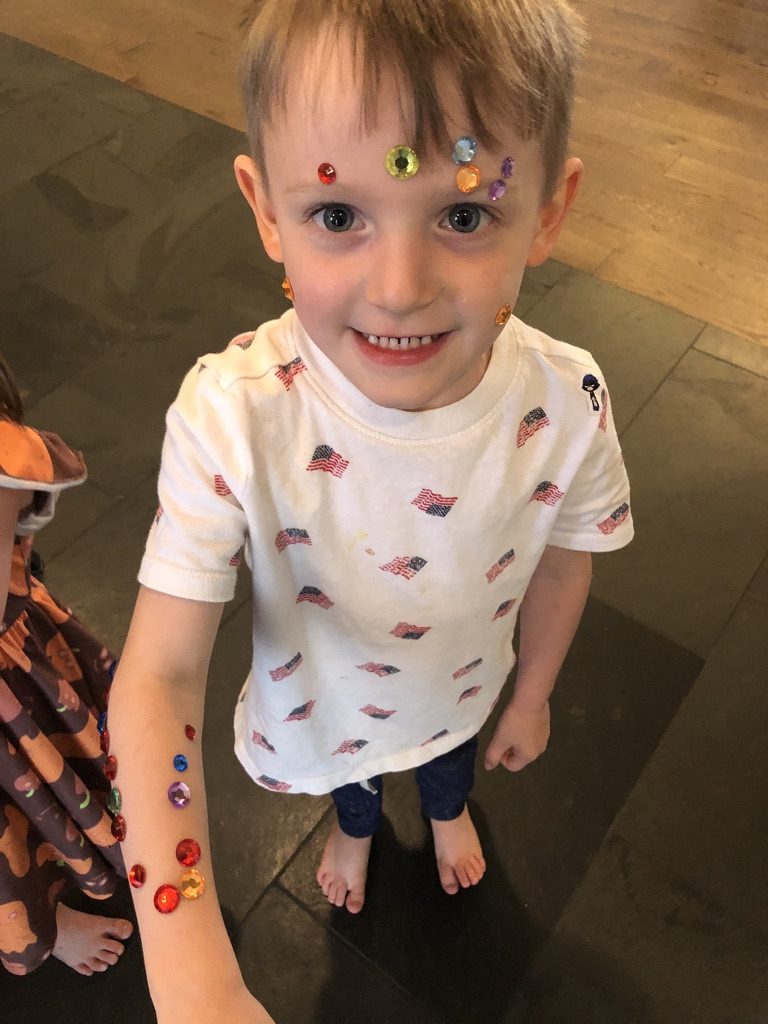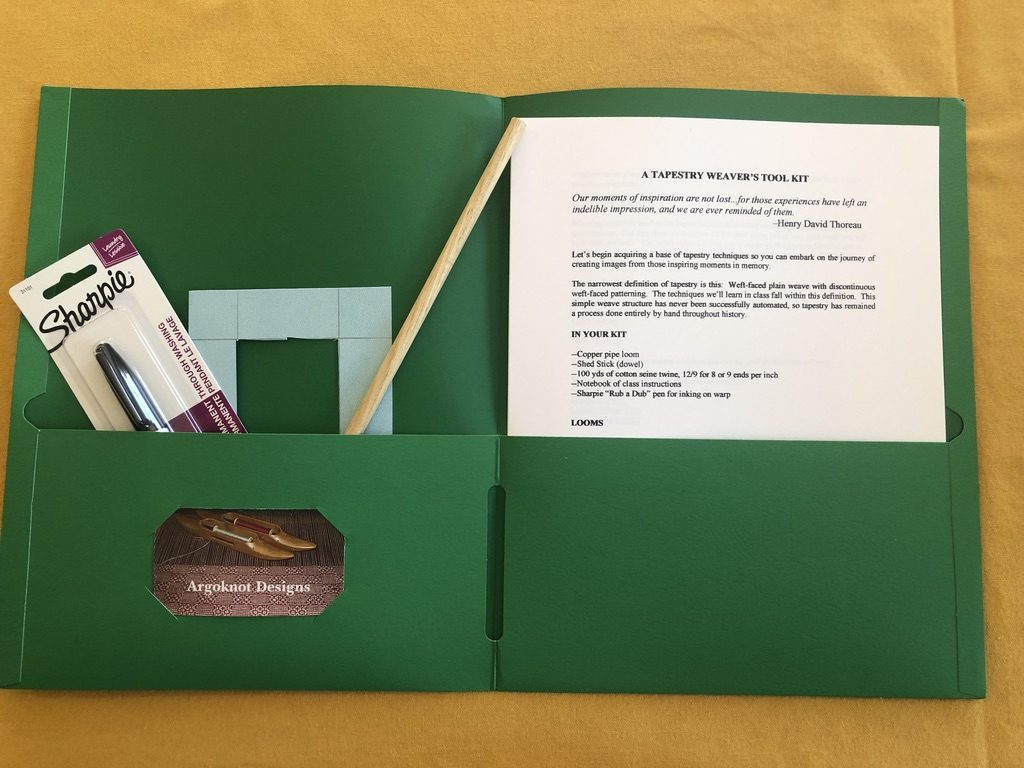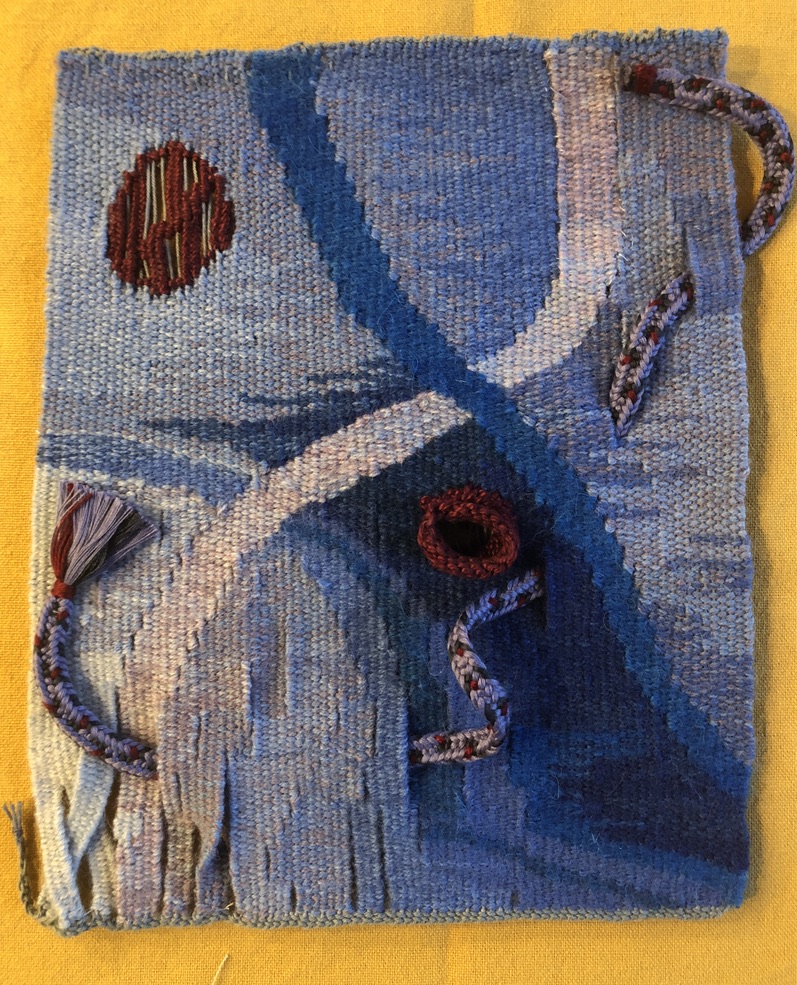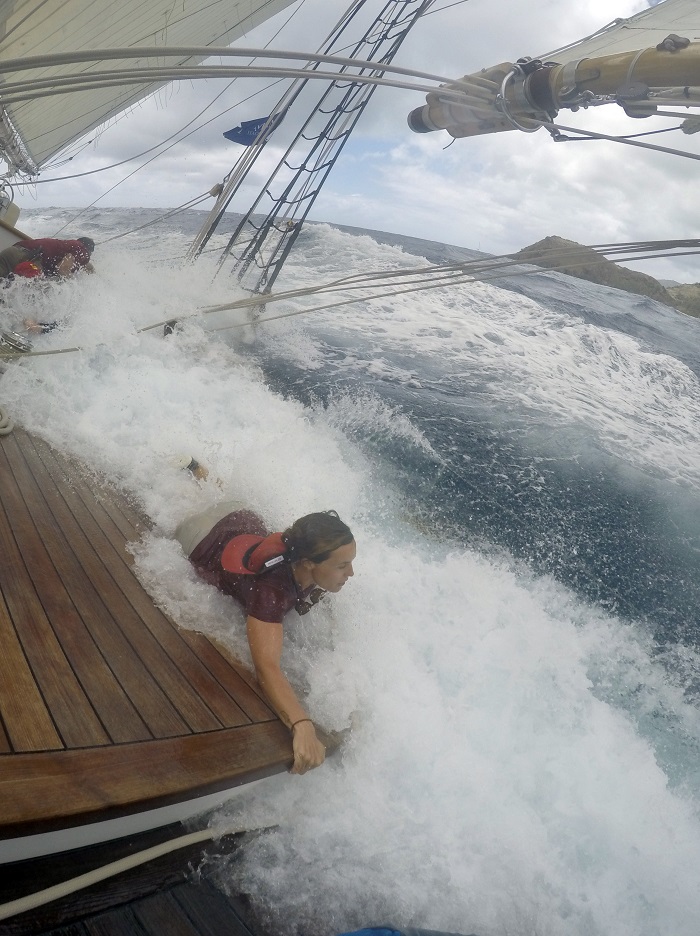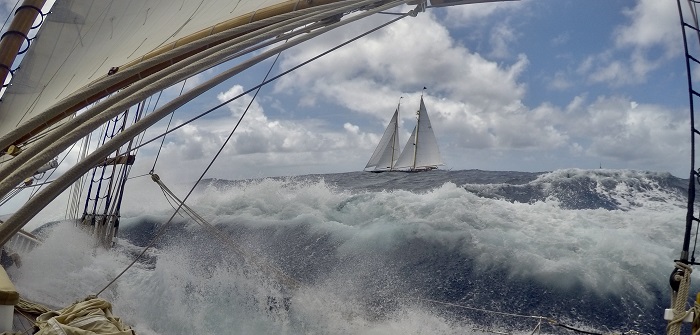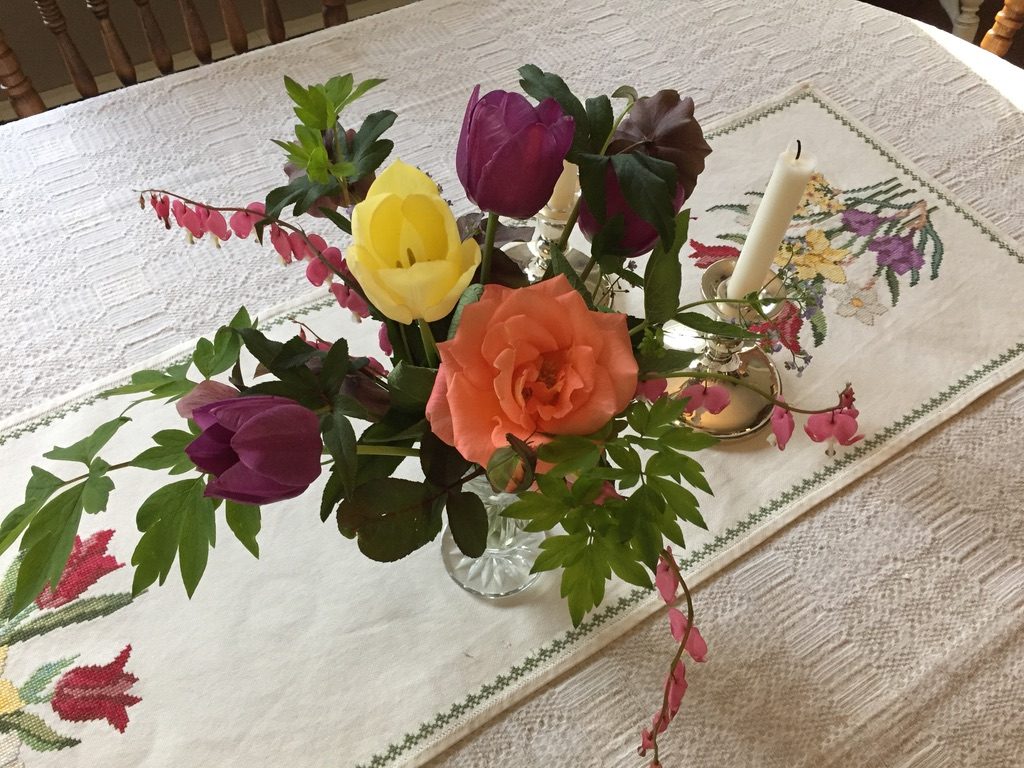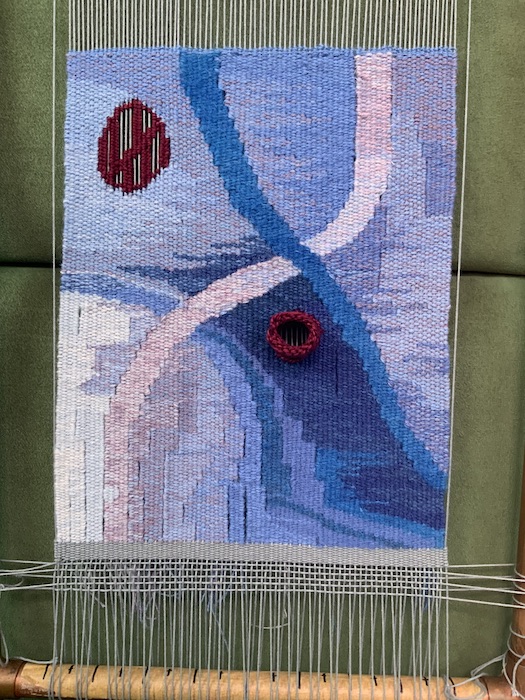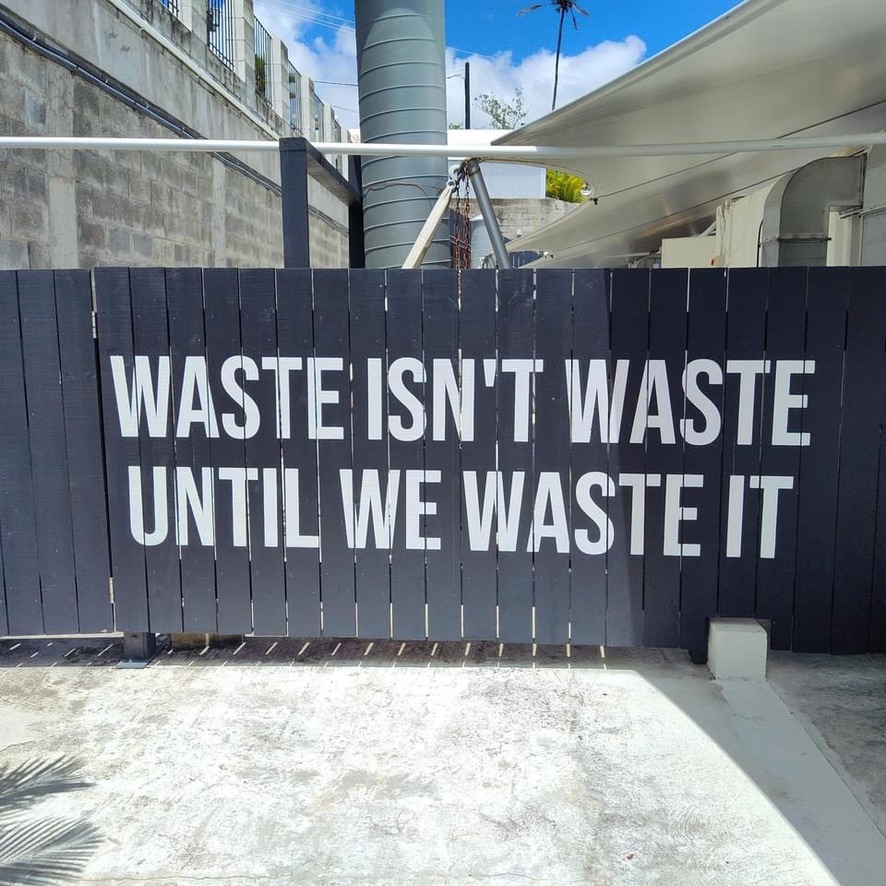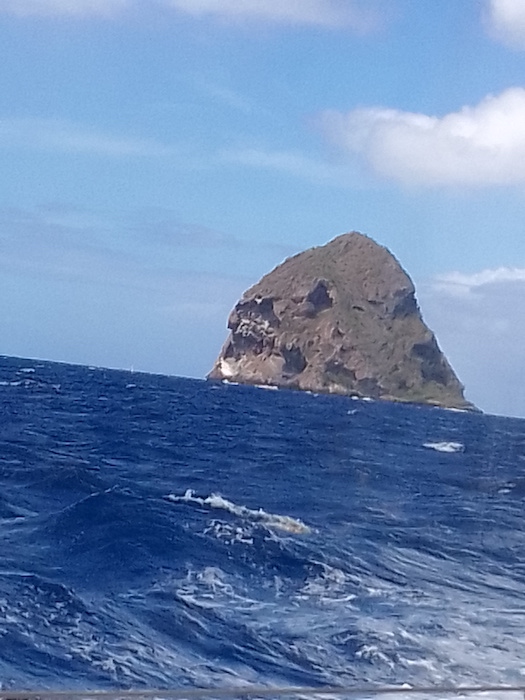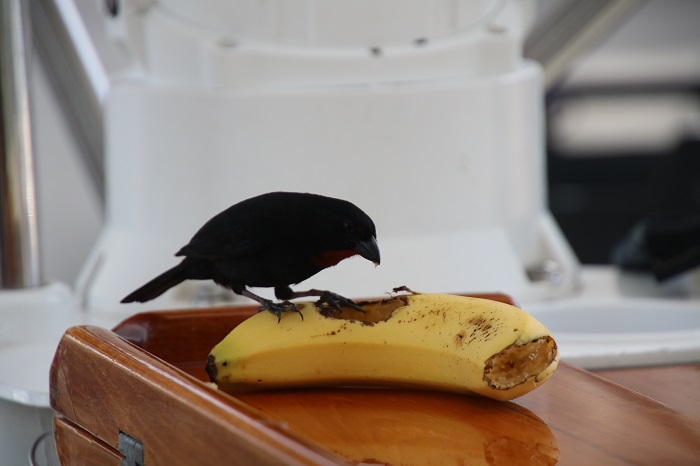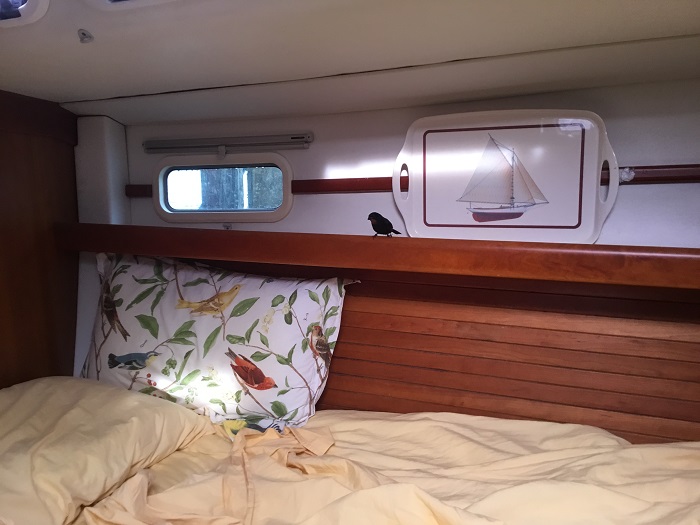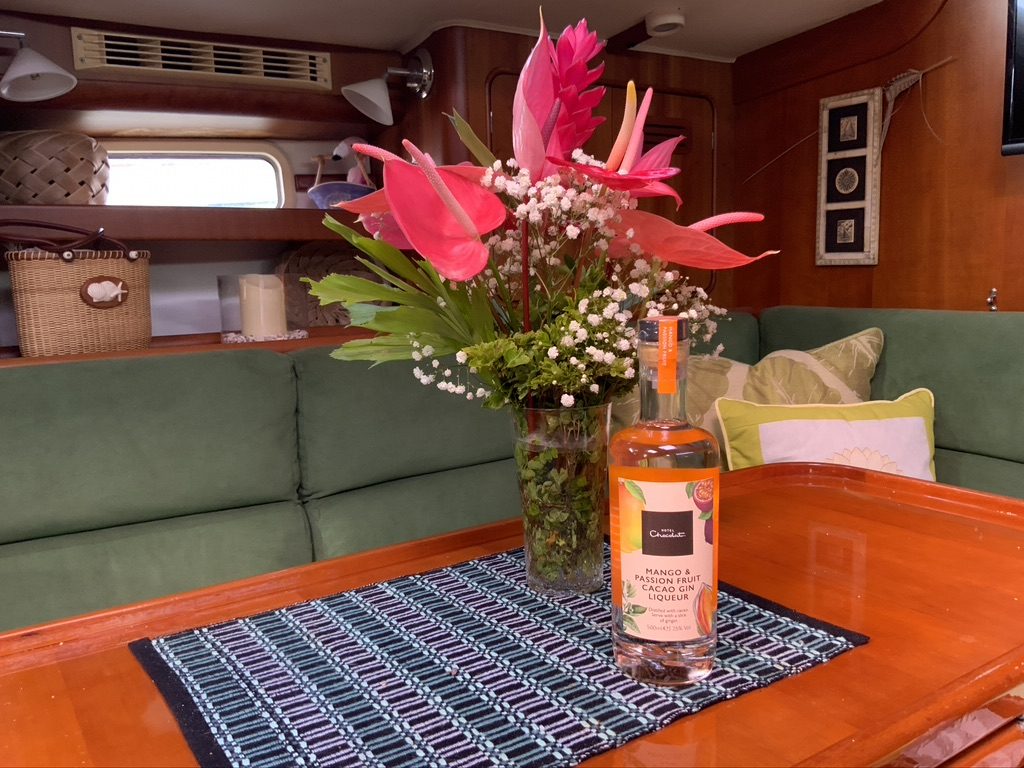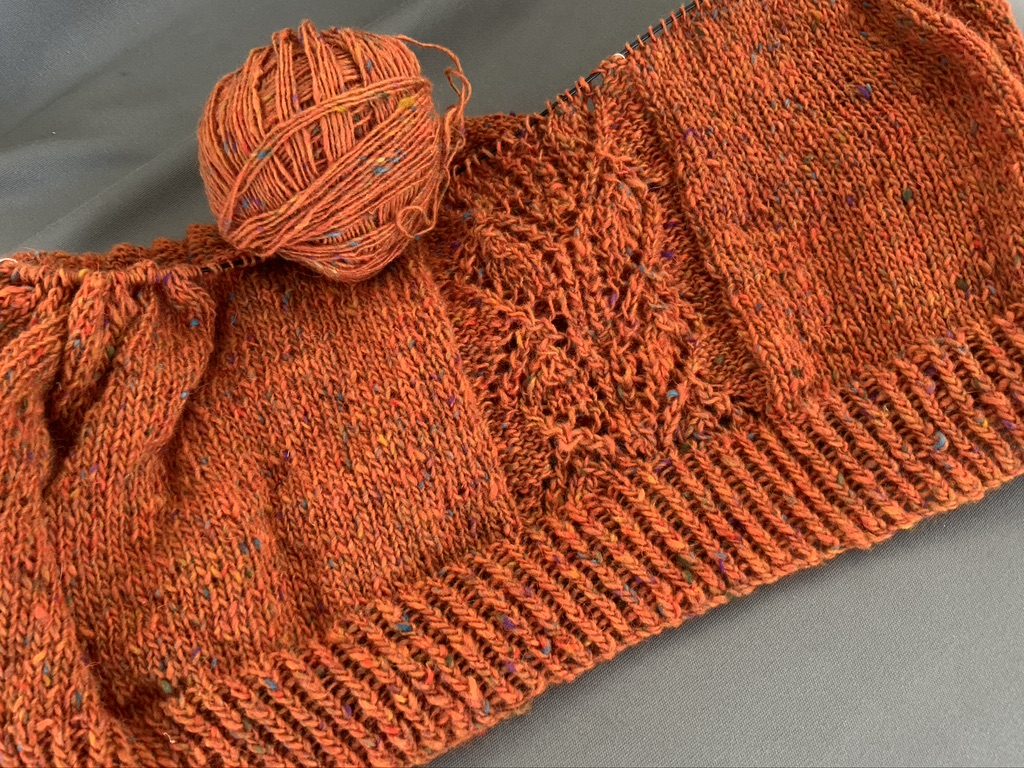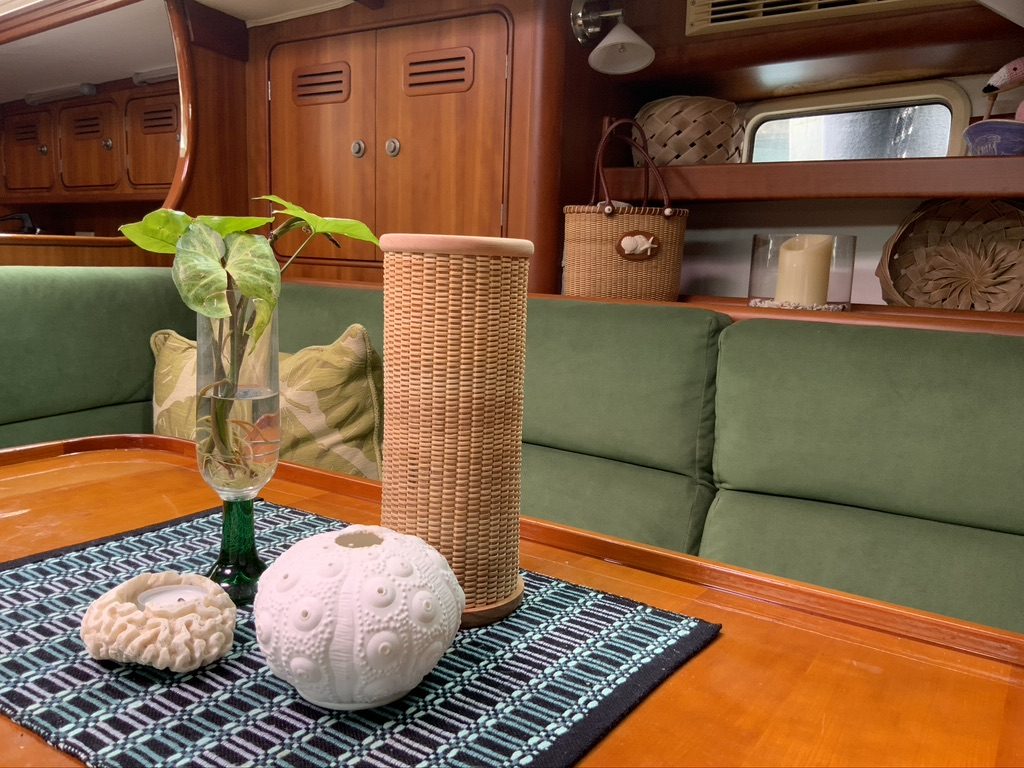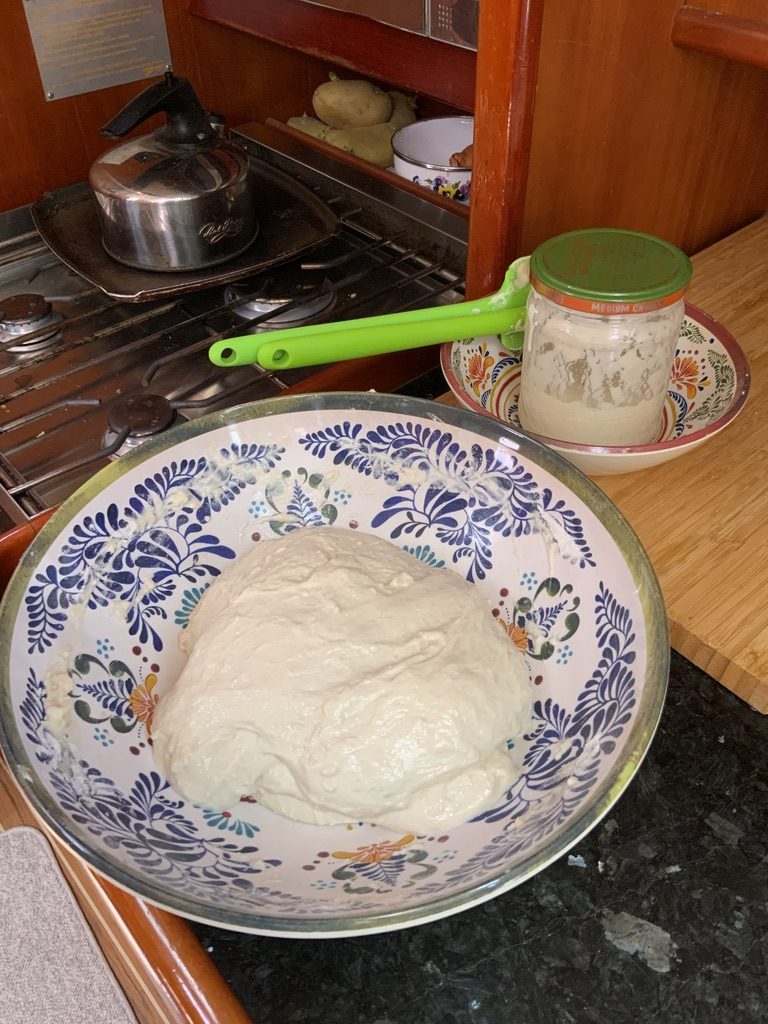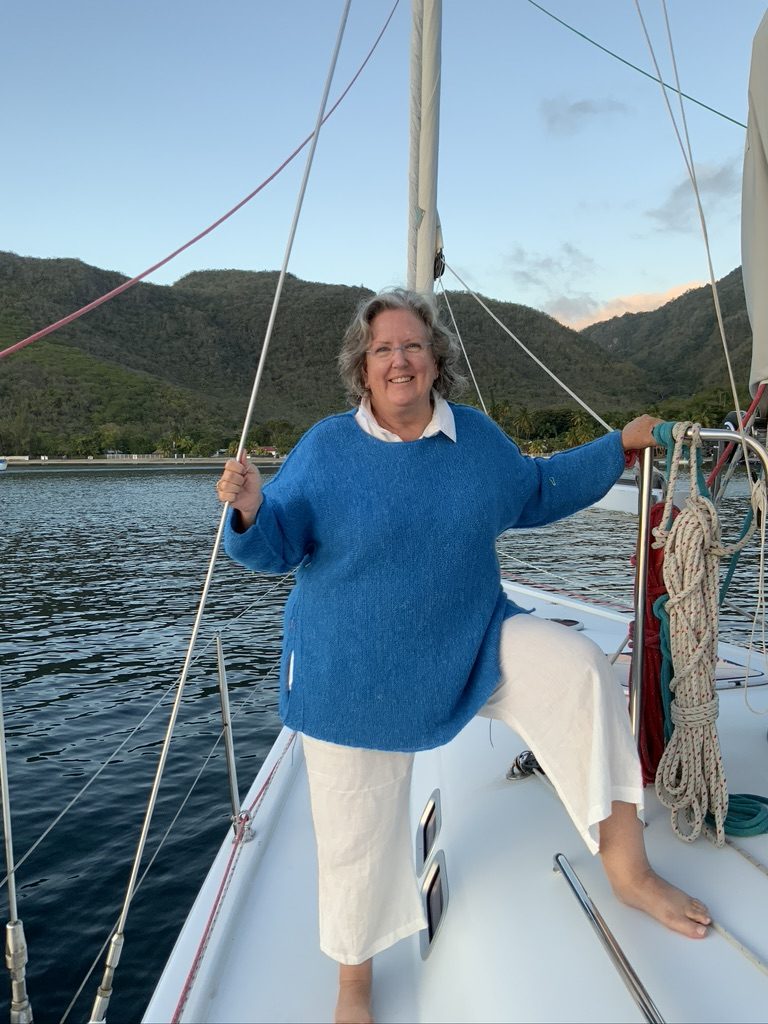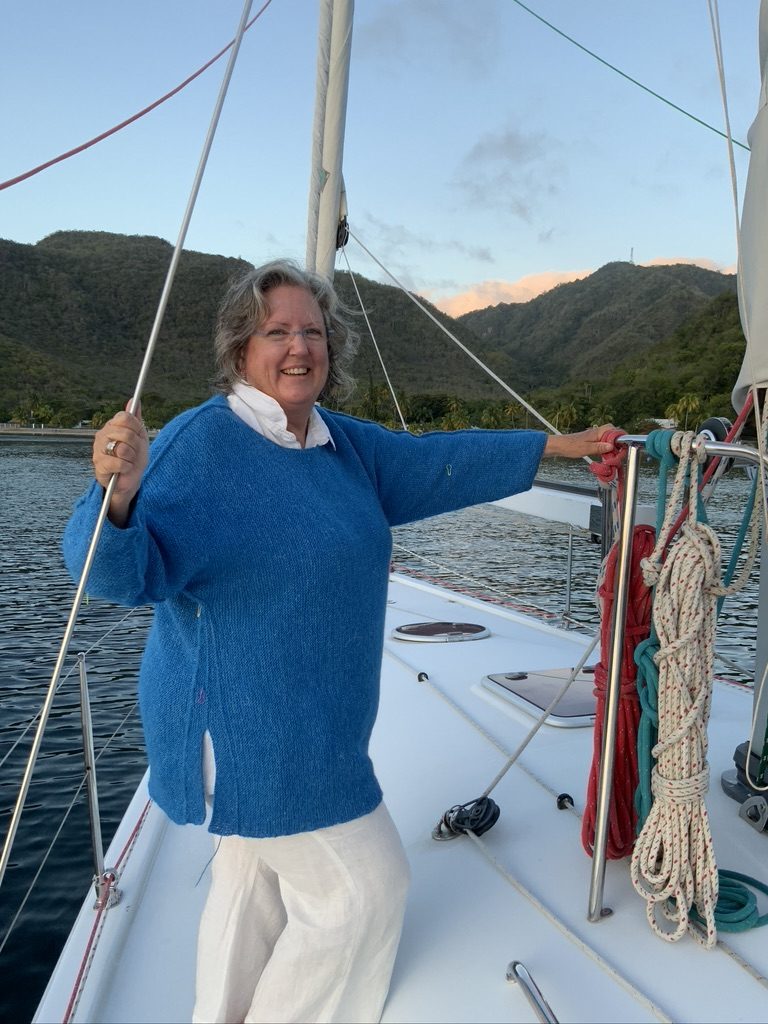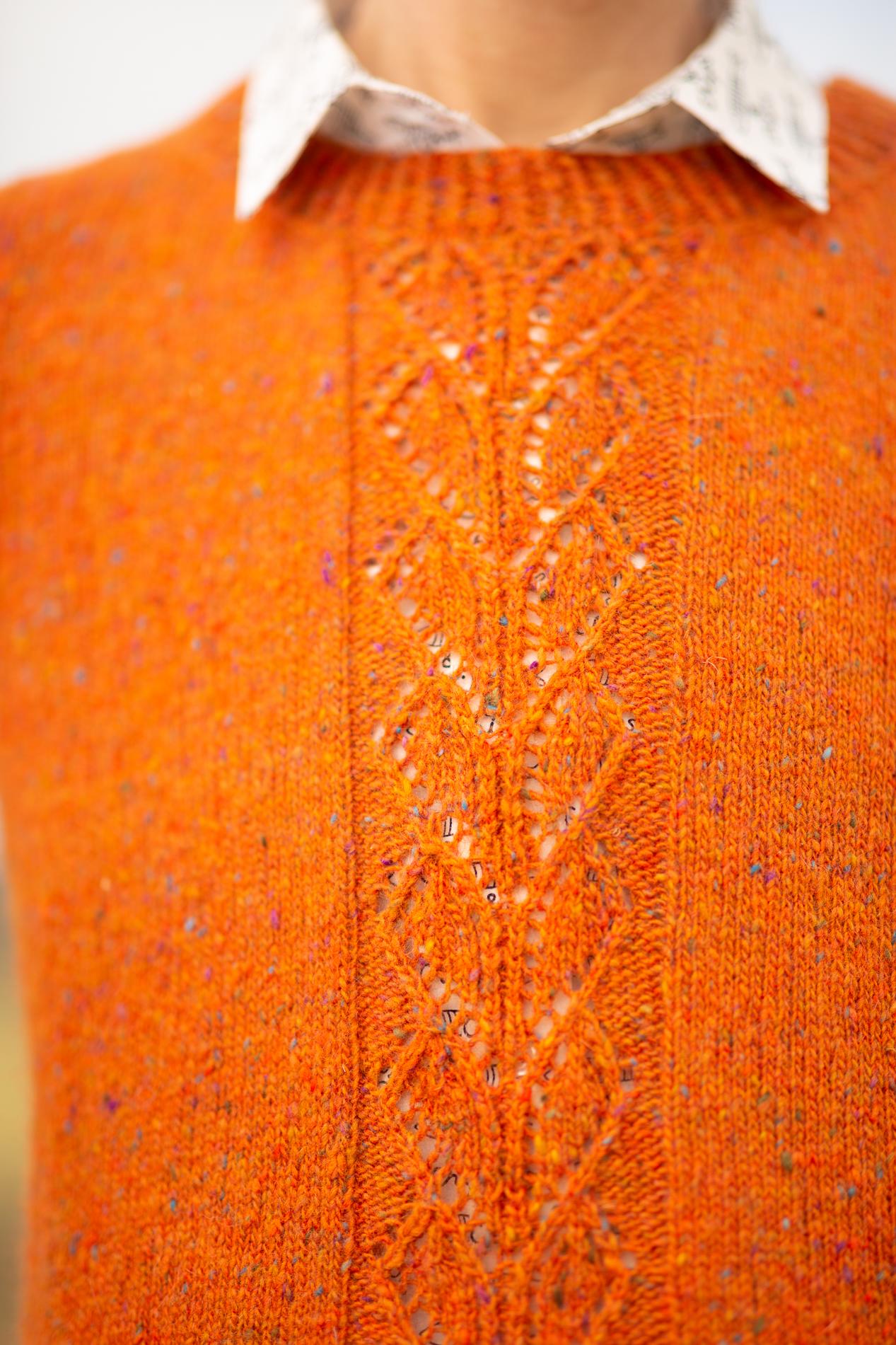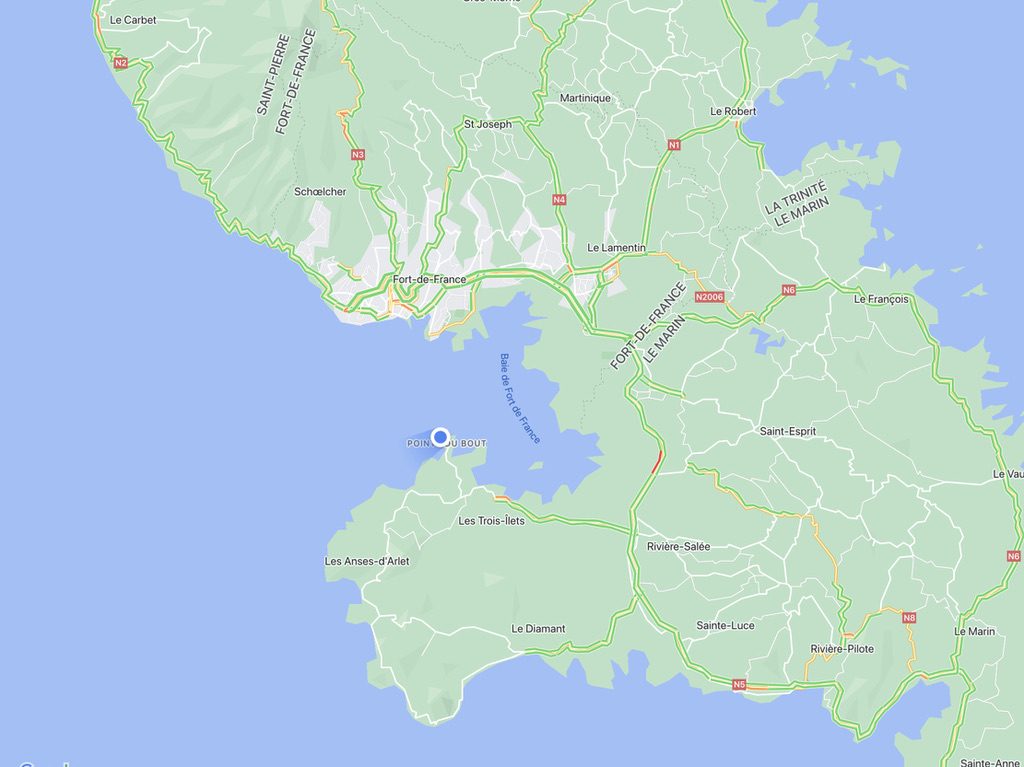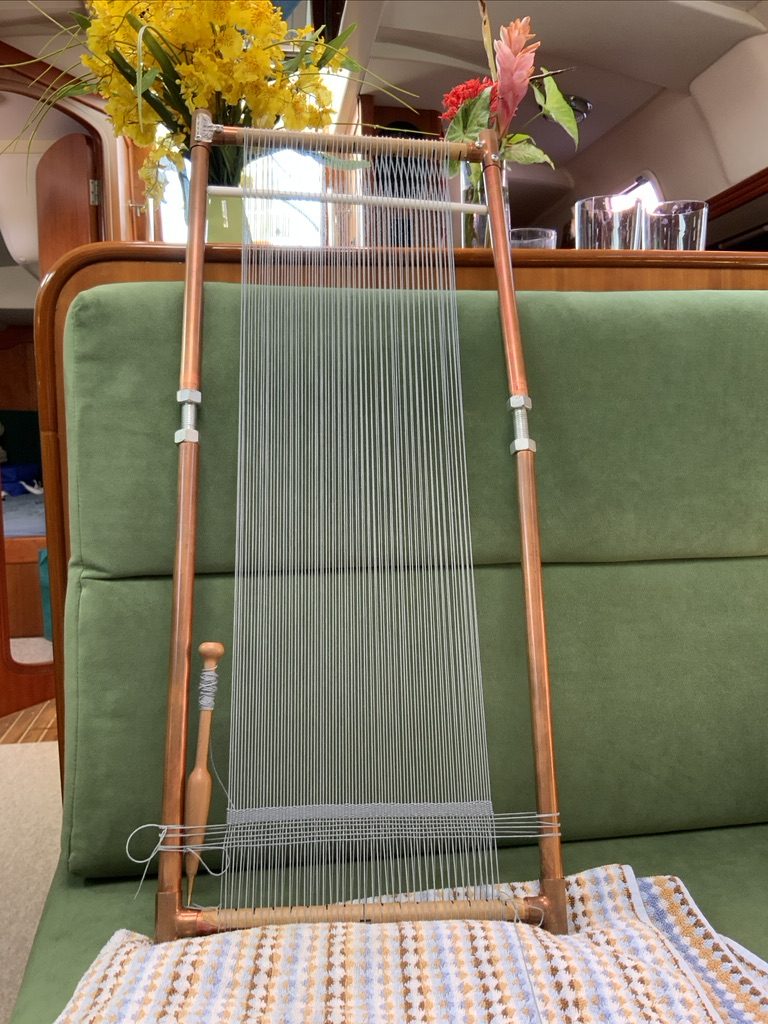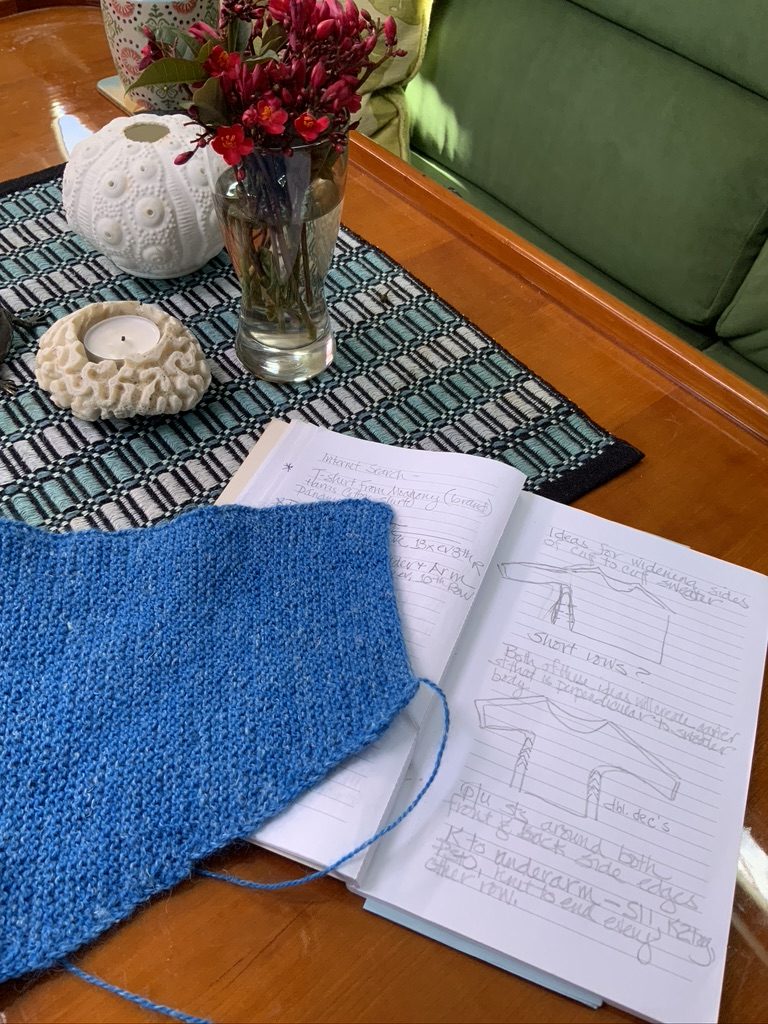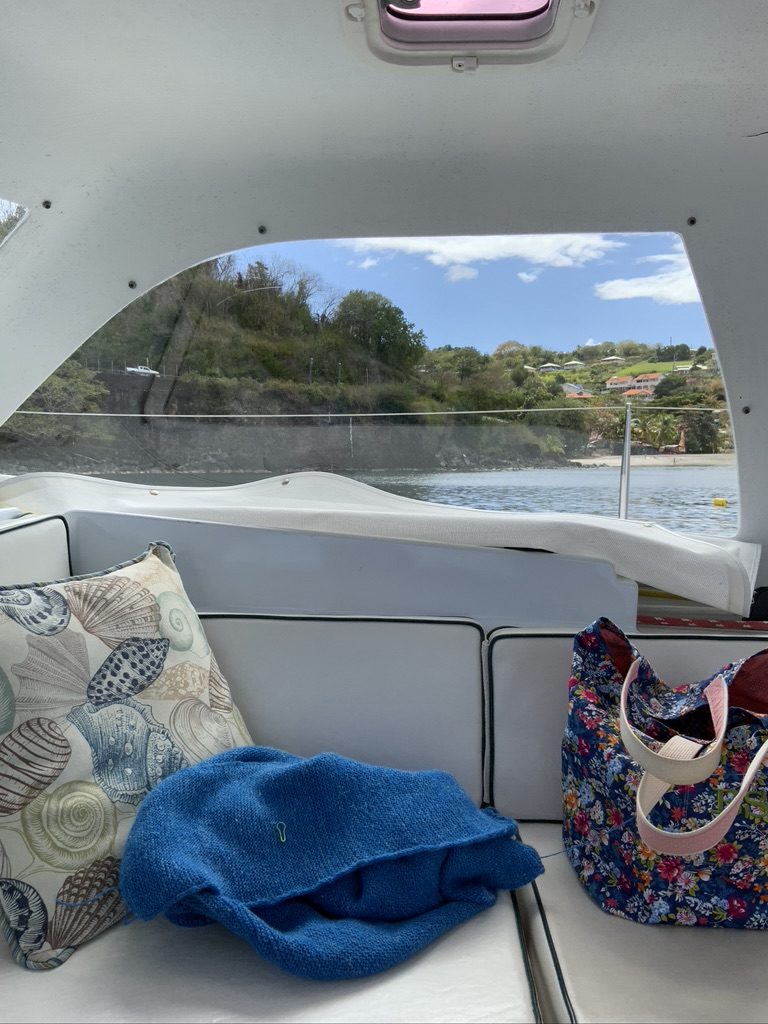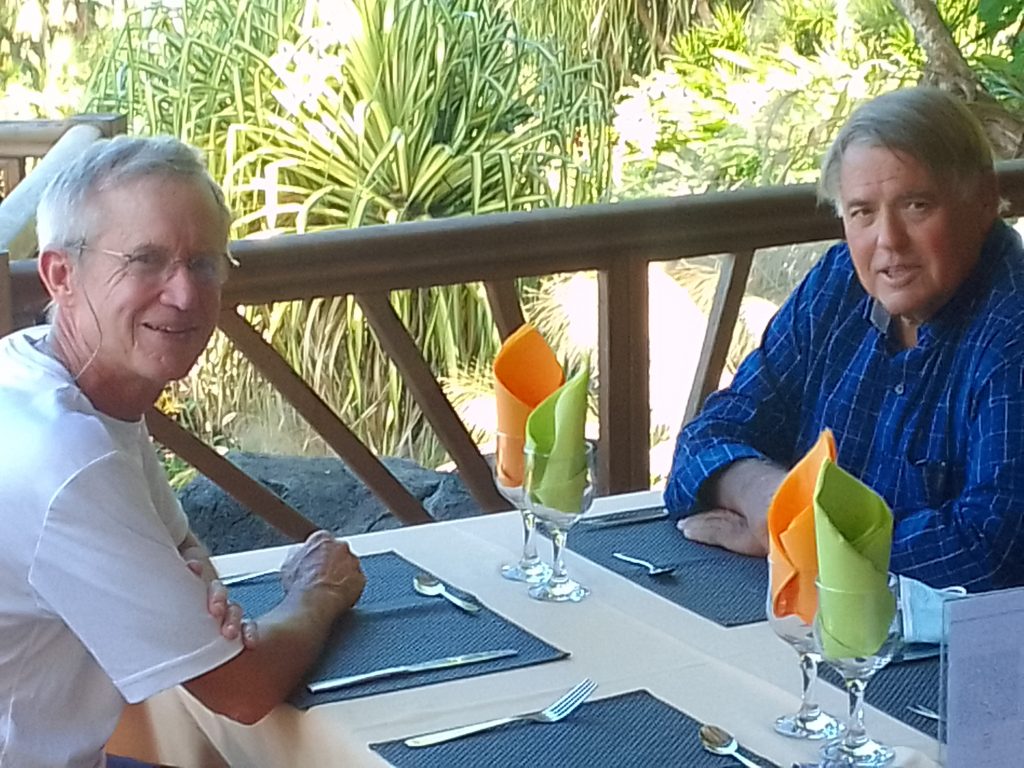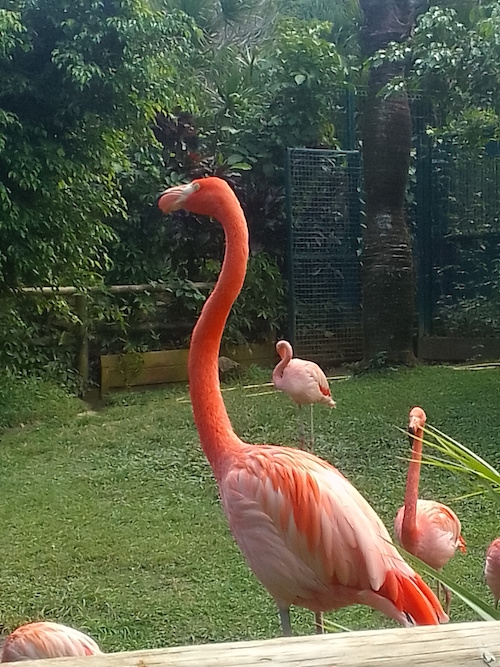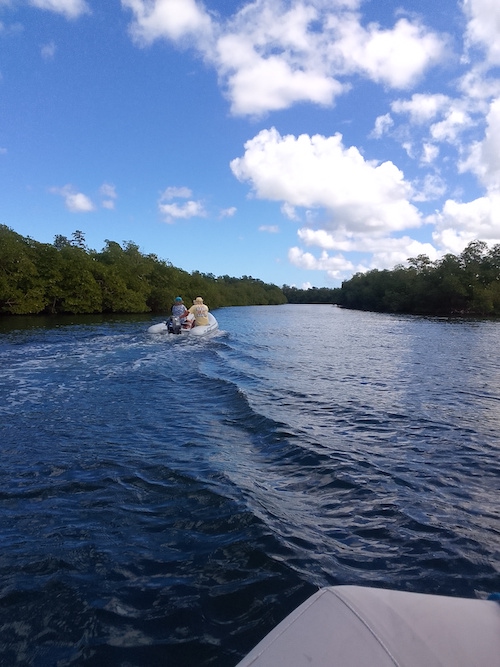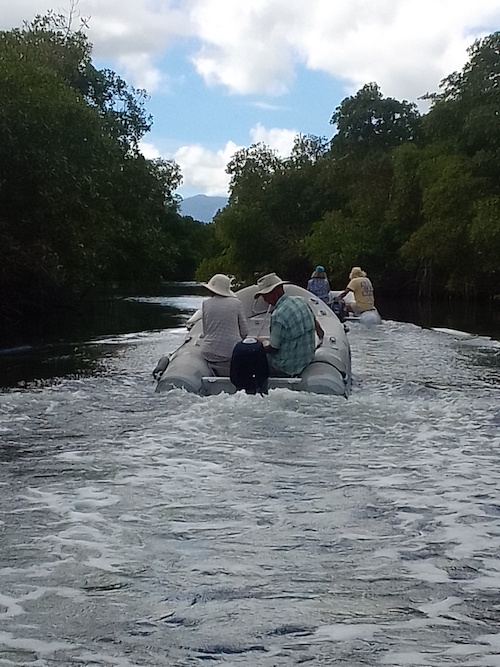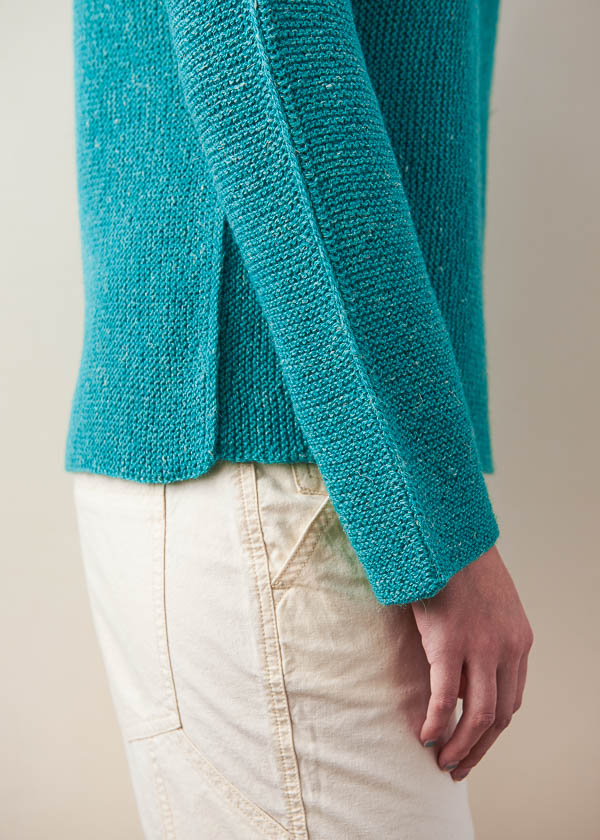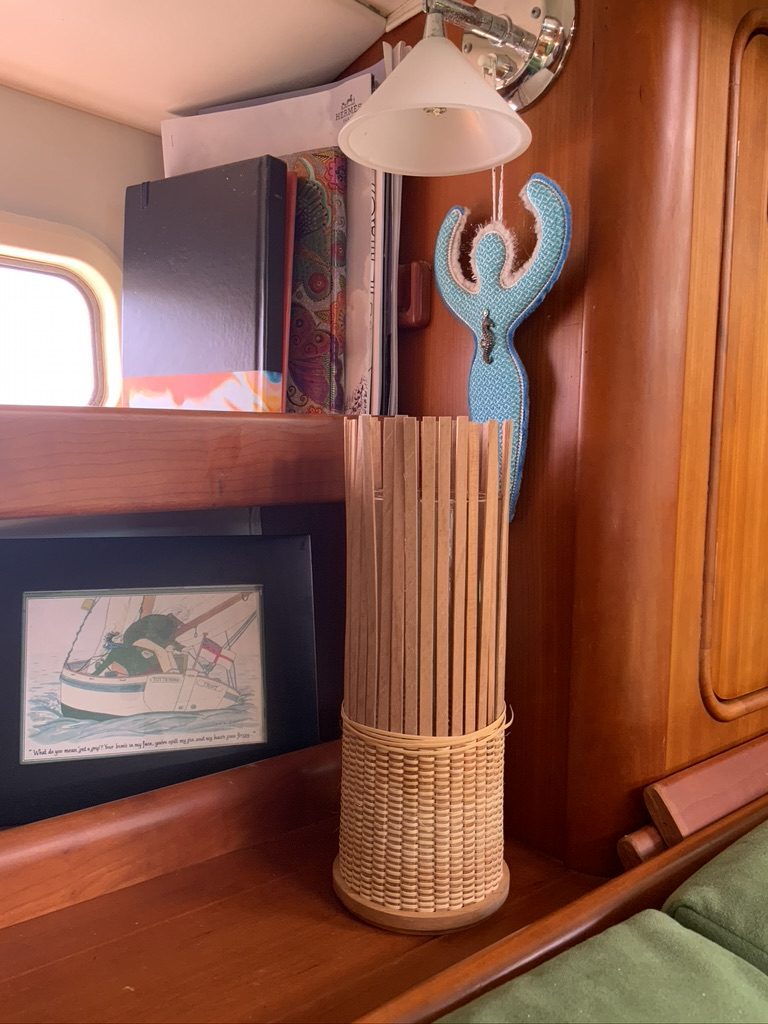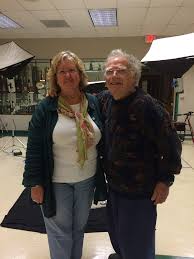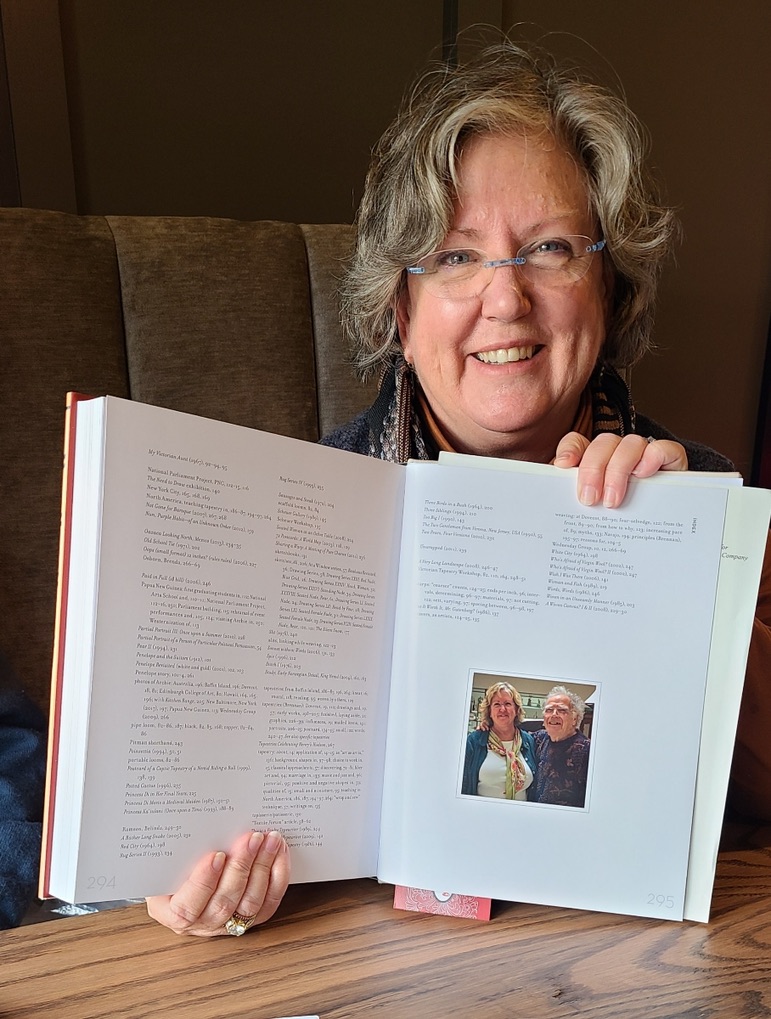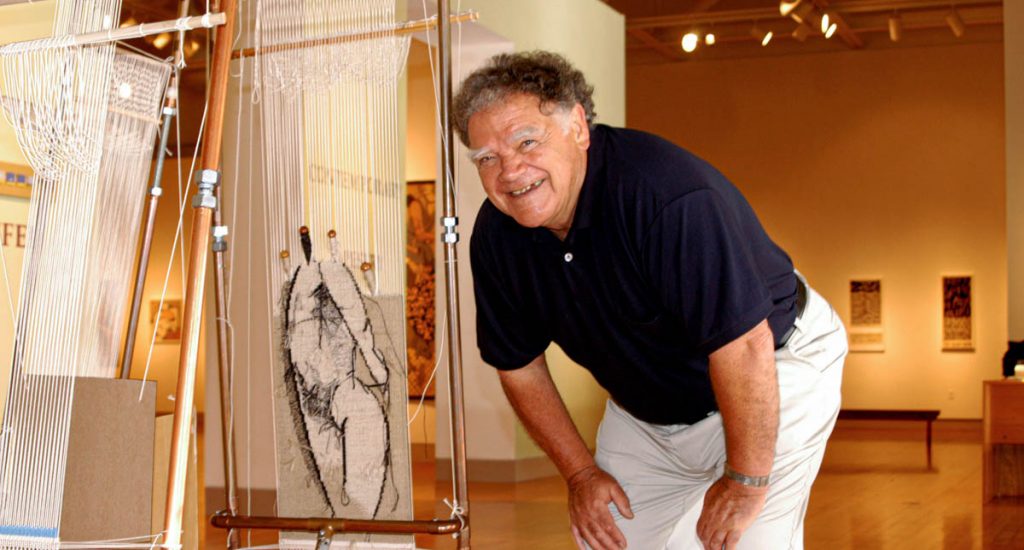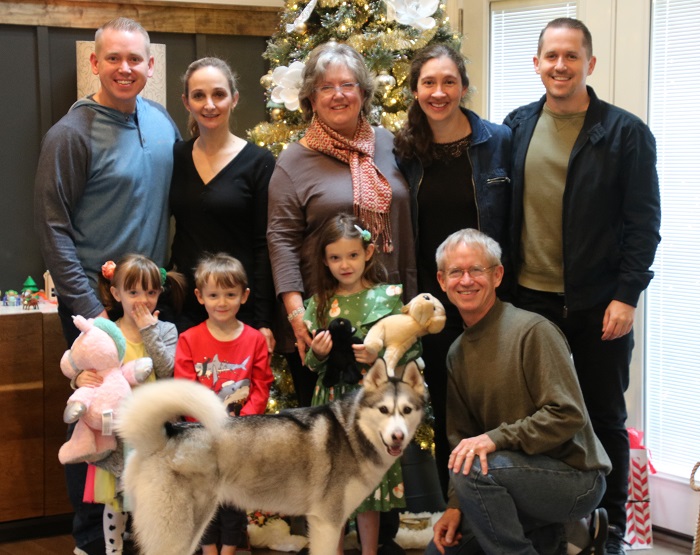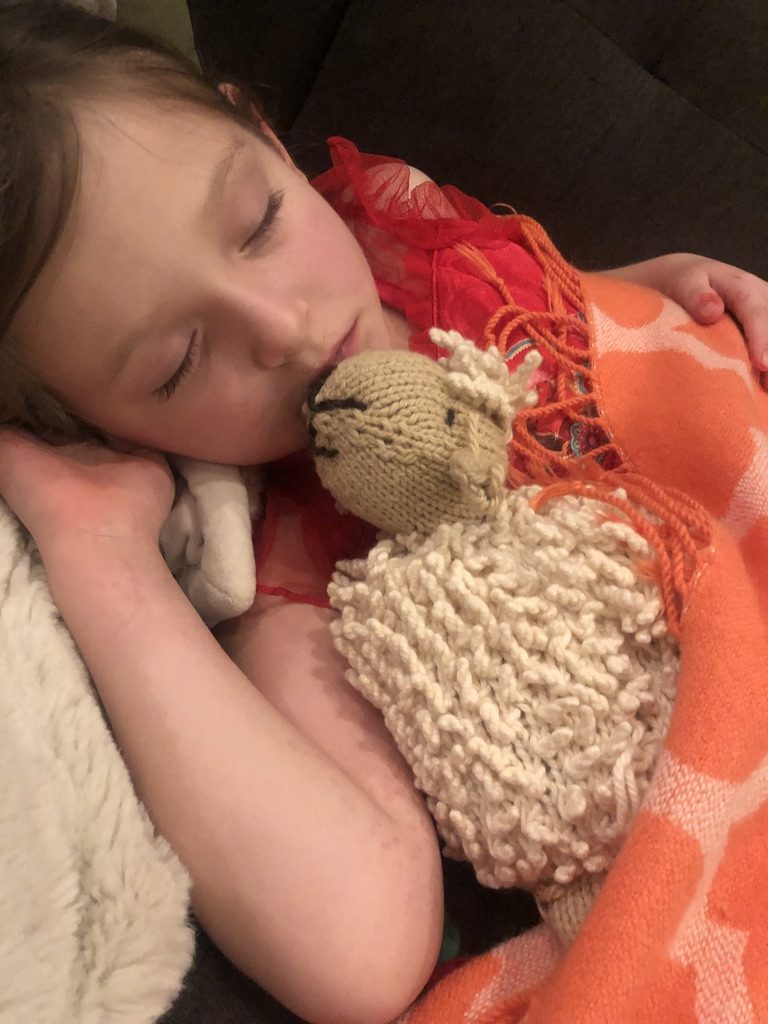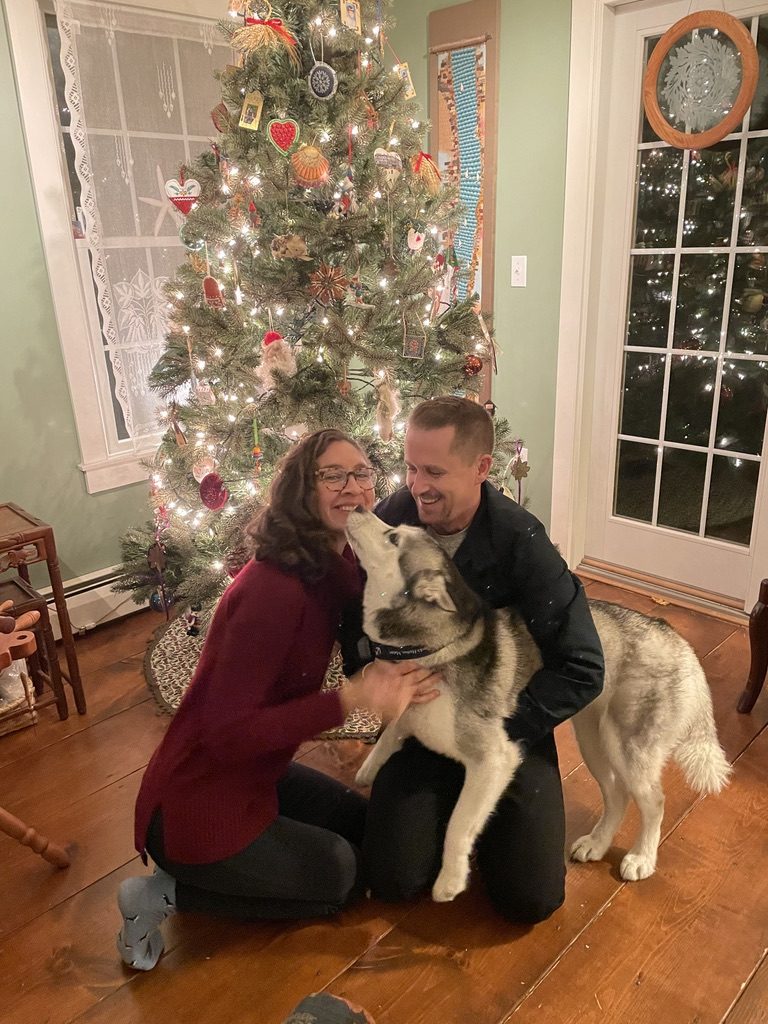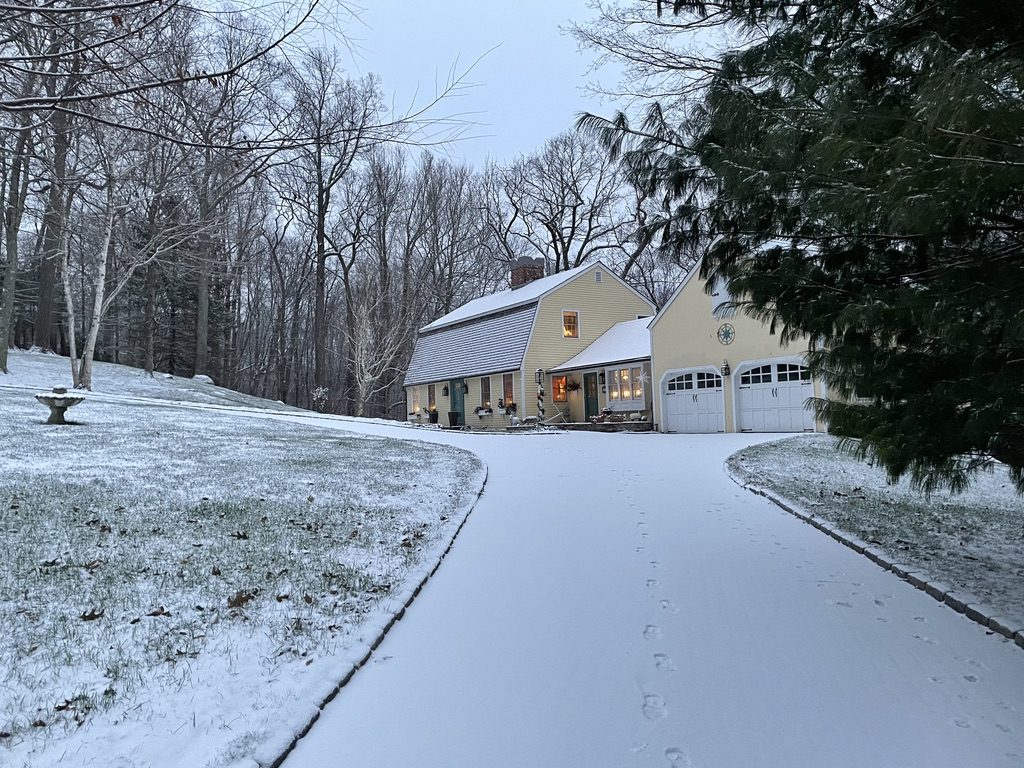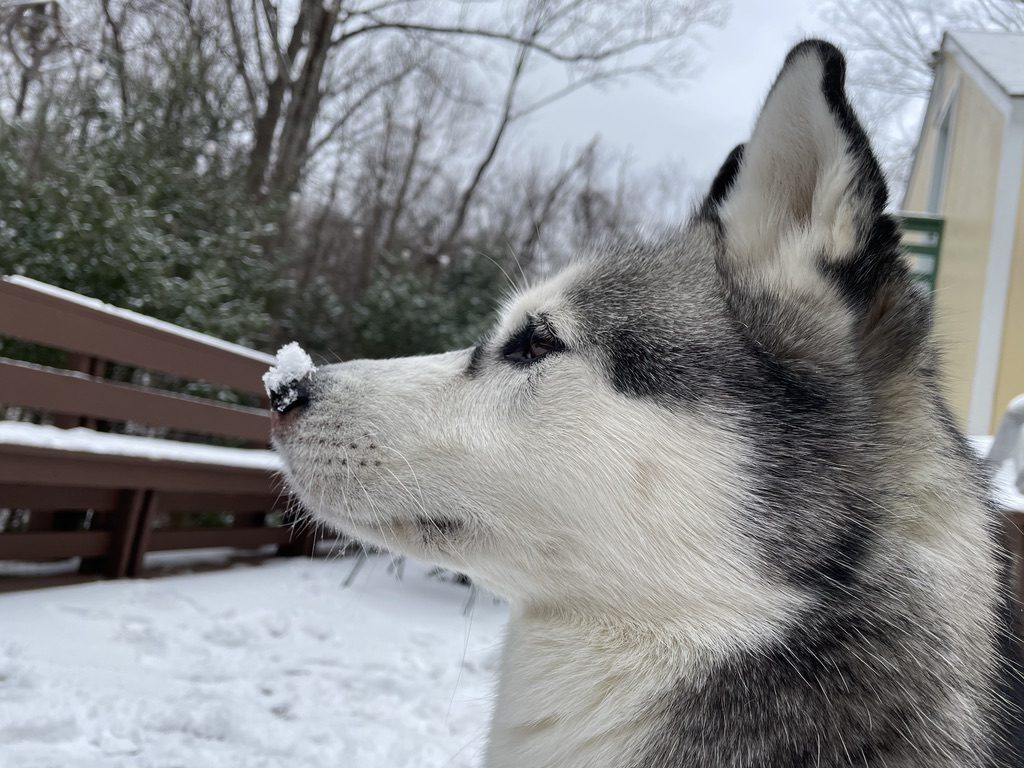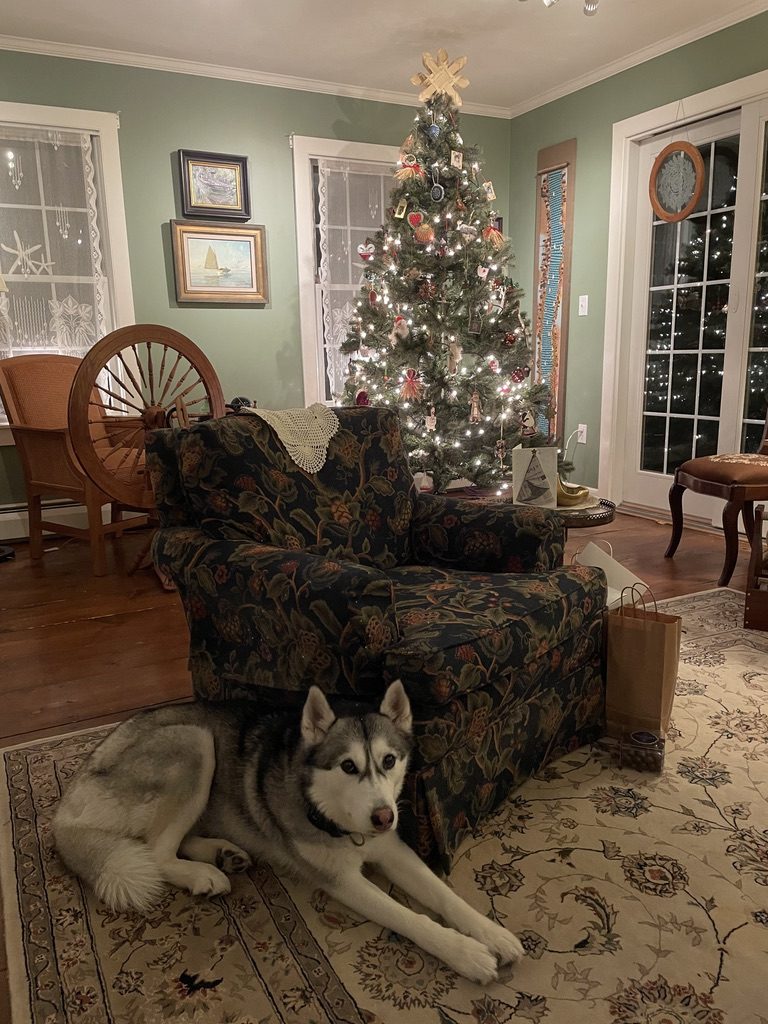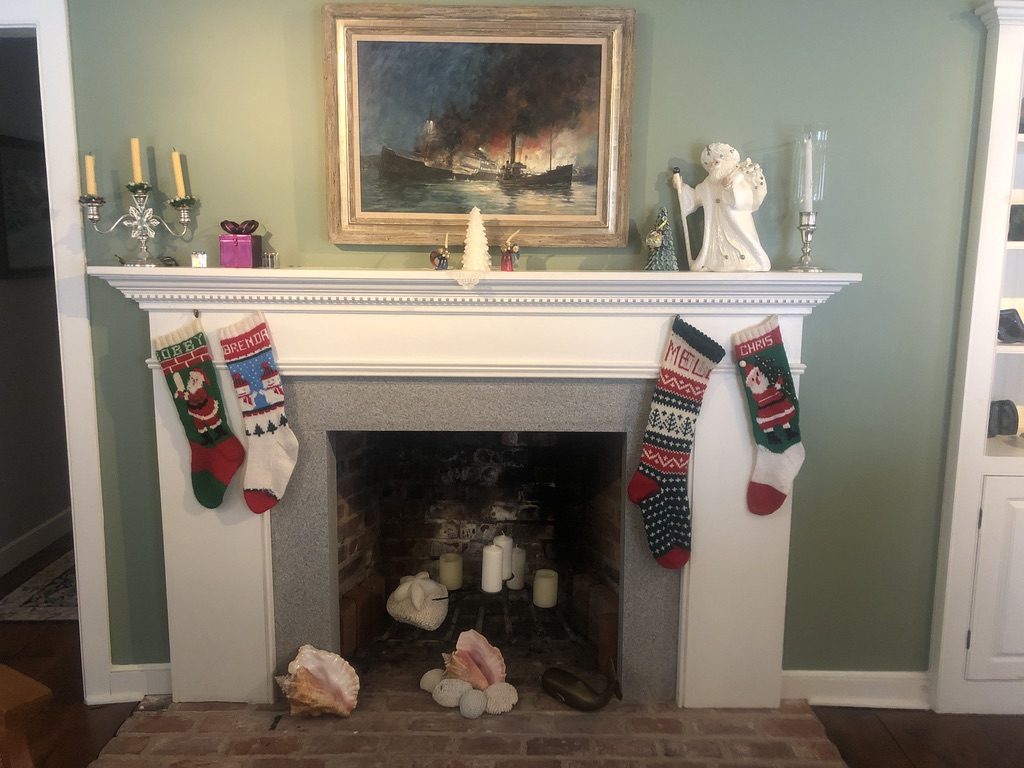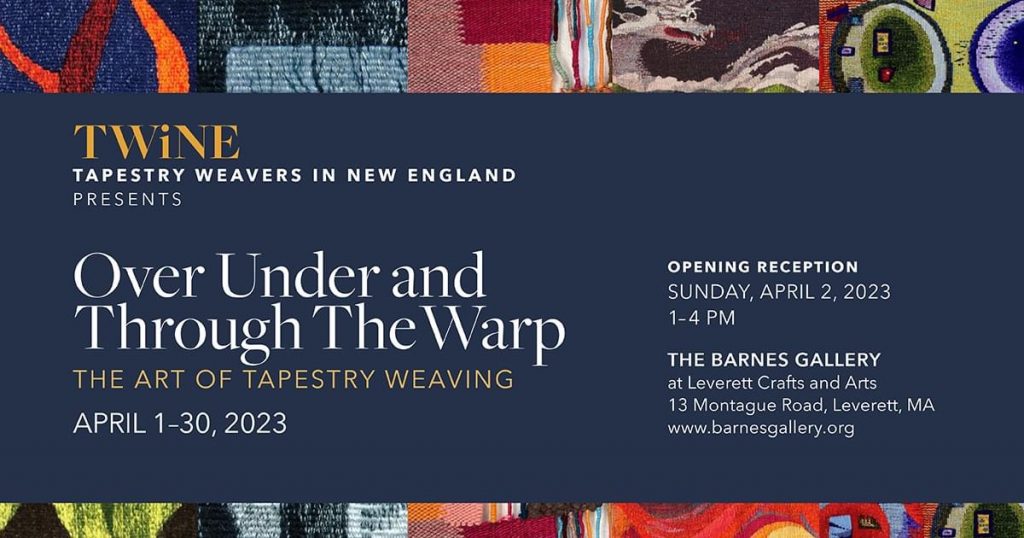Through all of July I was focused on weaving. What an extraordinary time it was! After a winter of missing weaving and all my weaving friends, I signed up for everything that crossed my path on the moments when I could be online in tropical ports. First I went to Convergence in Knoxville, Tennessee. My friend Kari and I went together by car, doing a fun bit of sightseeing along the way. We traveled via Skyline Drive and the Blue Ridge Parkway, stopping to enjoy the views along the way. We spent a day at Monticello. It was a hot one. We would have explored more if only it had been a few degrees cooler. We had some adventures along the way, such as when we were stuck on Skyline Parkway with an overheated radiator. It took about four hours to get help from AAA and get some coolant added to the engine, but during that time we met a lot of travelers who stopped to talk and offer us water and food while we waited. The world is a much friendlier place than shown on the news. But you knew that, didn’t you?
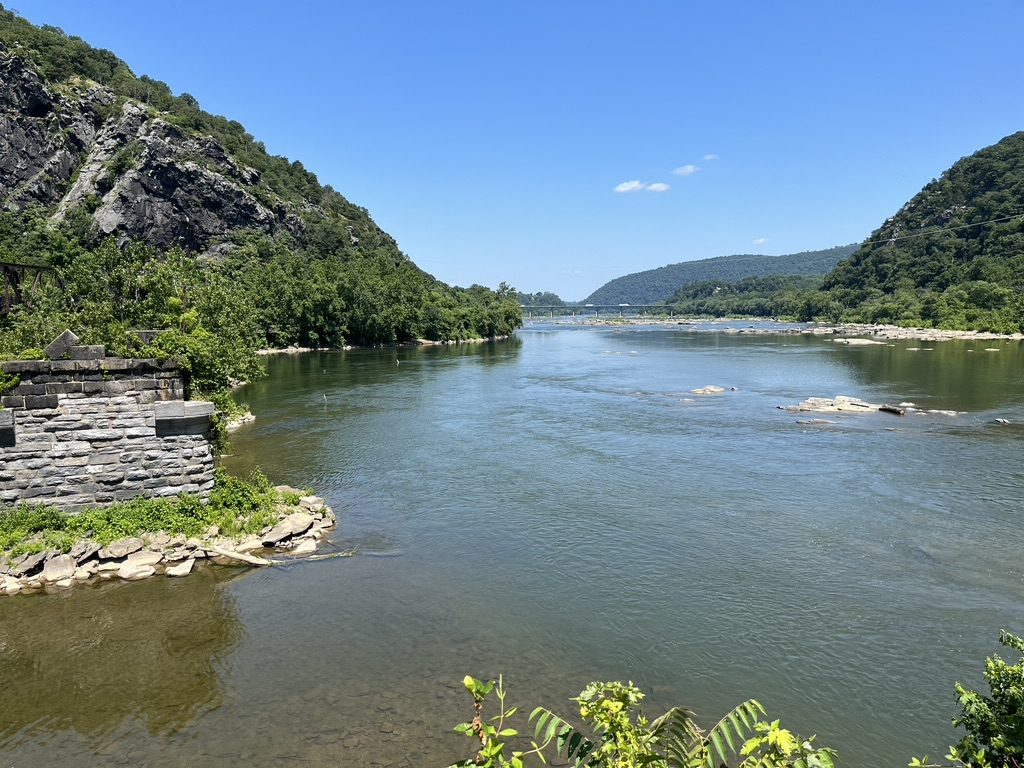
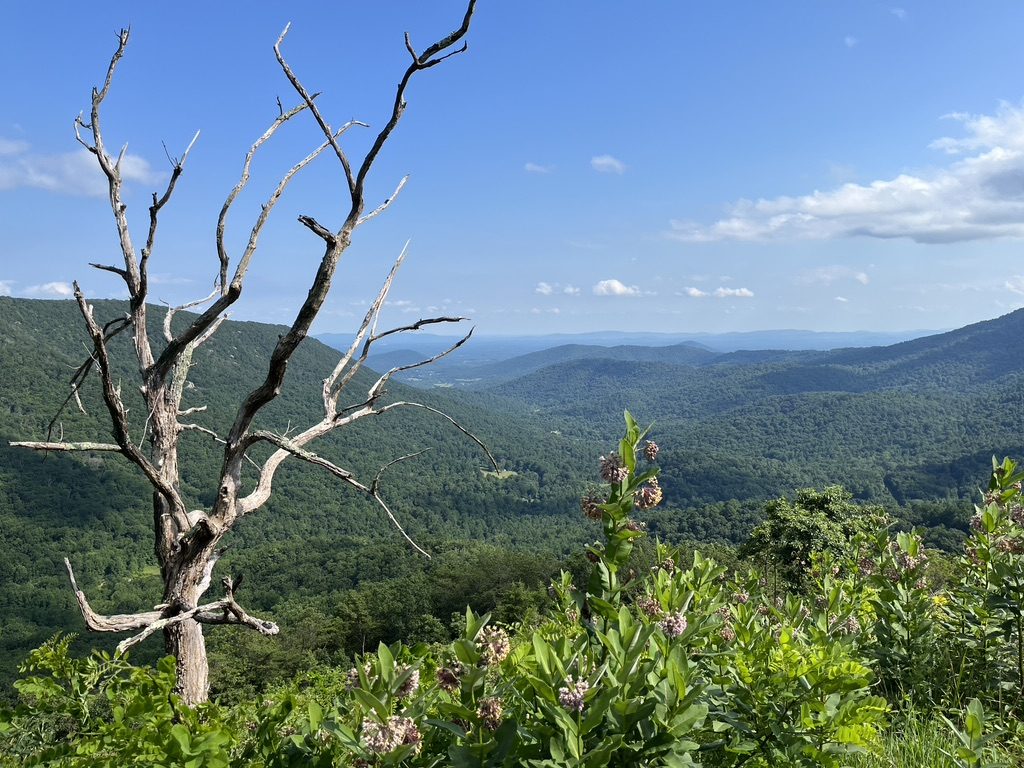
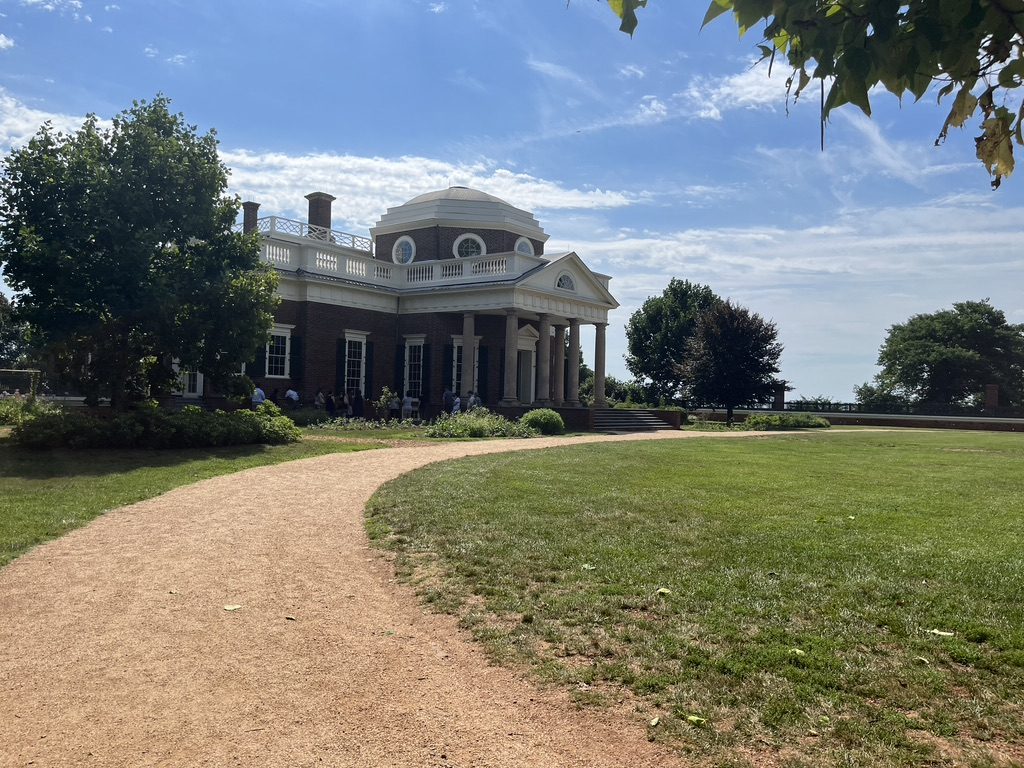
We left from the Baltimore area and arrived in Knoxville four days later! Hello Convergence!
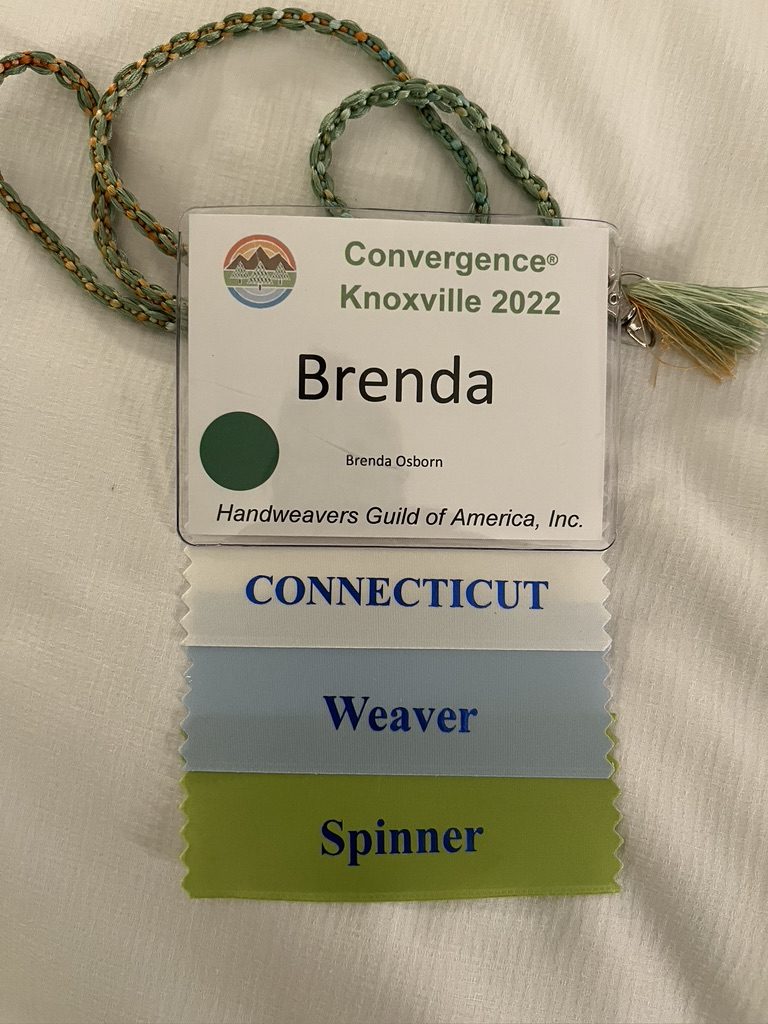
I registered for three classes–beginning sprang, a lecture on Frieda Hansen by Robbie LaFleur, and a ‘make and take’ Dorset button project with Denise Kovnat. My publisher had a booth in the vendor hall so I was asked to give a short talk there.
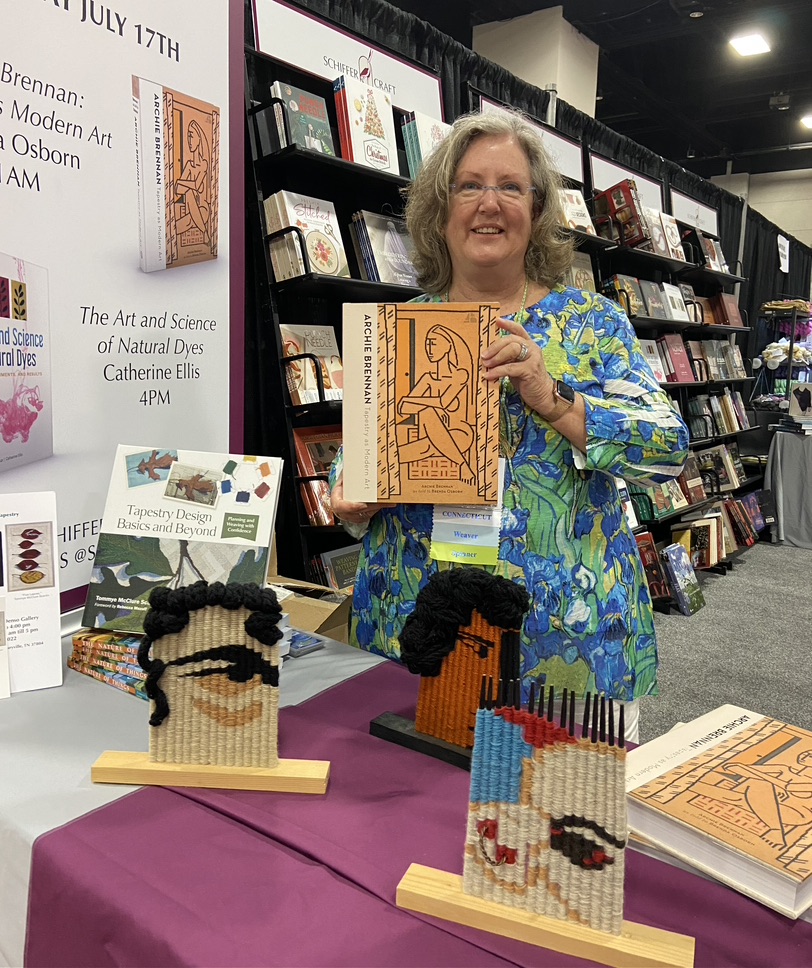
Although my talk was not well attended, all the copies of Archie’s book had sold by Monday morning! And the talk gave me excellent practice for an upcoming short talk and chopstick loom workshop I’ll give in early September. All good.
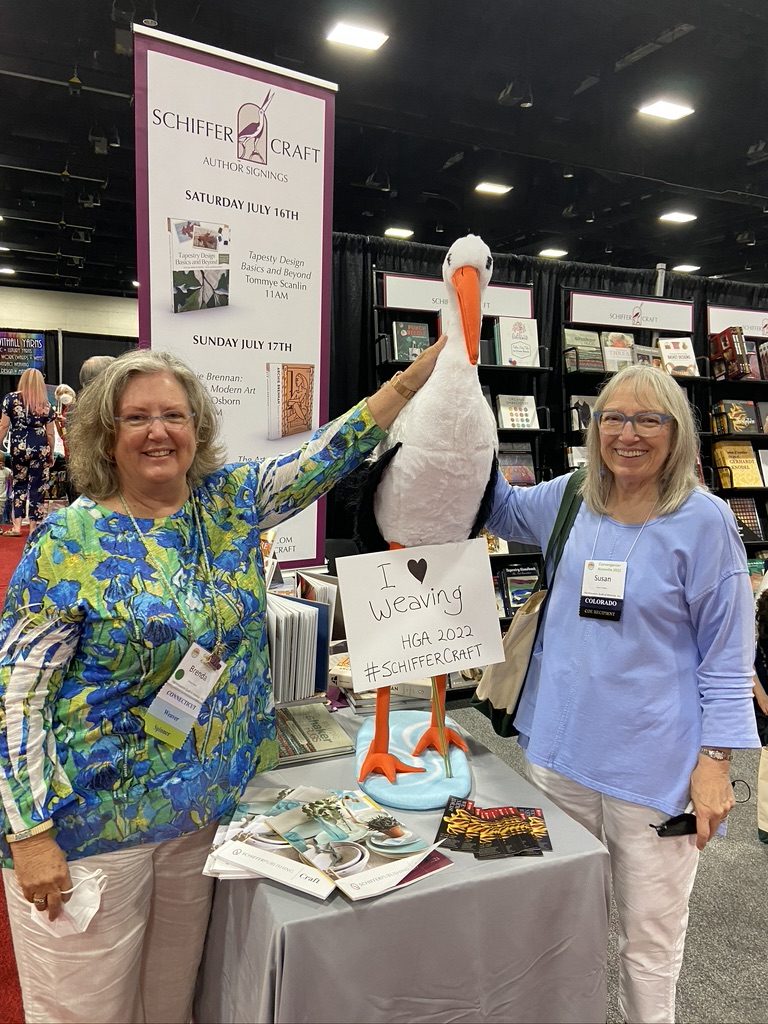
Here Susan Wilson (author of Weaving Crackle and More) and I are petting the Schiffer Stork–an interesting mascot since publishing a book is a bit like giving birth. The gestation period for the Archie Brennan book was more than 12 years.
The sprang class sent me down a rabbit hole I did not expect to go. I just wanted to understand it as an historical artifact and technique. Now I’d like to make things, which will involve learning and practicing–I’m sure a lot of practicing. Carol James makes such lovely clothing in this technique. In September I will start a six-week online course with her in beginning sprang. Sprang rabbit hole, here I come!
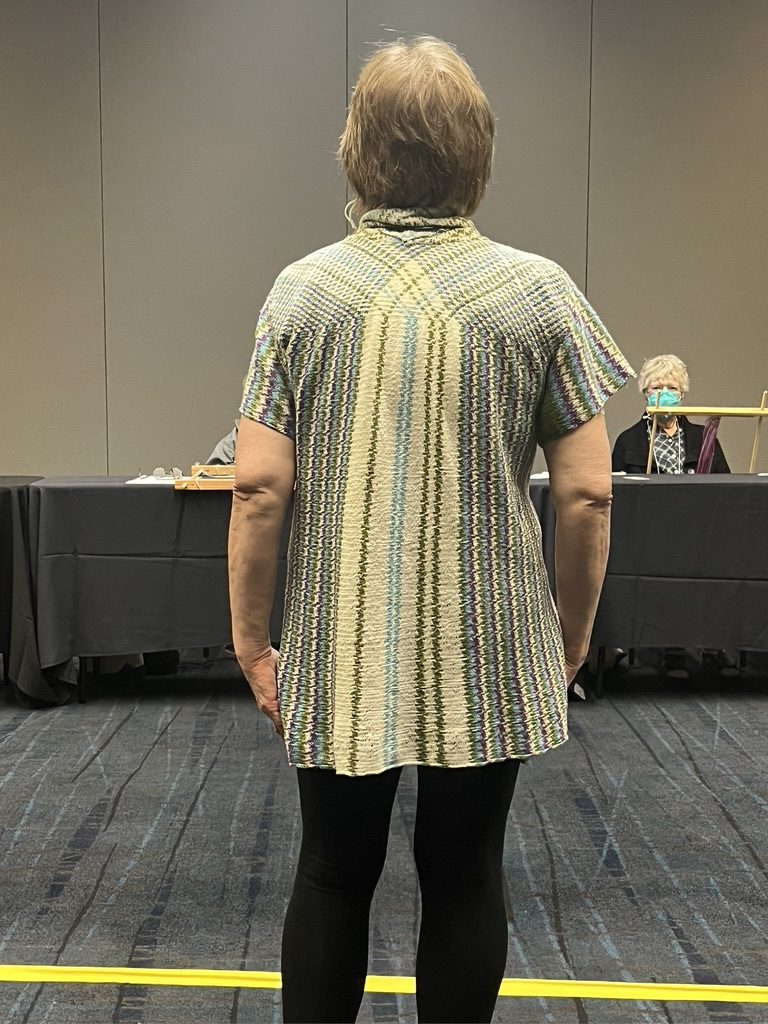
Her work in the juried show was so delicate and drape-y and elegant!
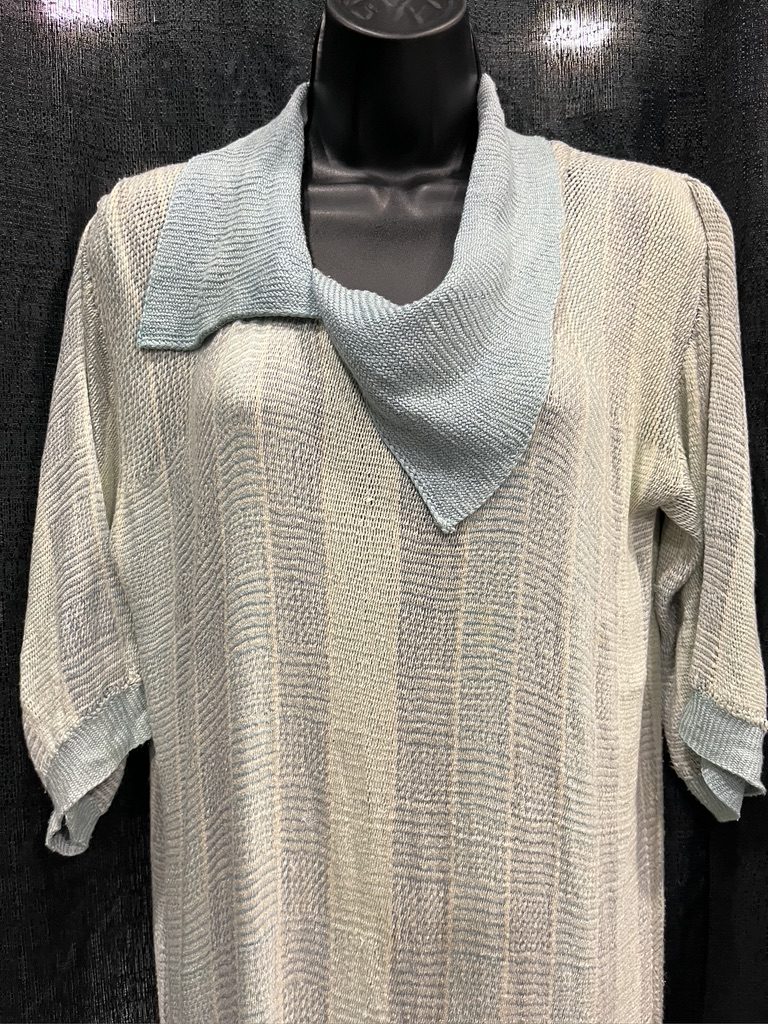
She also had work in the yardage show in which she wove the entire alphabet in sprang. It was hard to see, but here is her touchable sample.
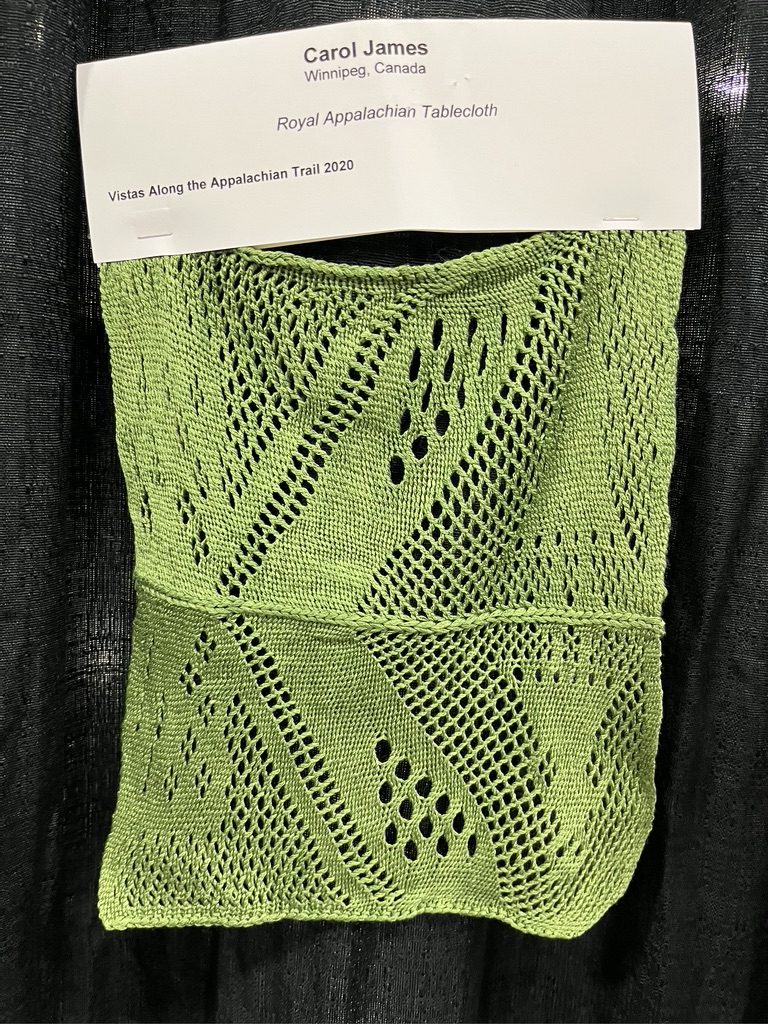
The lecture and slide presentation that Robbie LaFleur gave on Frieda Hansen gave me more intriguing ideas to pursue! We had three hours to learn about Frieda and see many images of her tapestries, which are unique for leaving so much warp unwoven. Excuse those bright white dots. They must be a reflection from the screen.
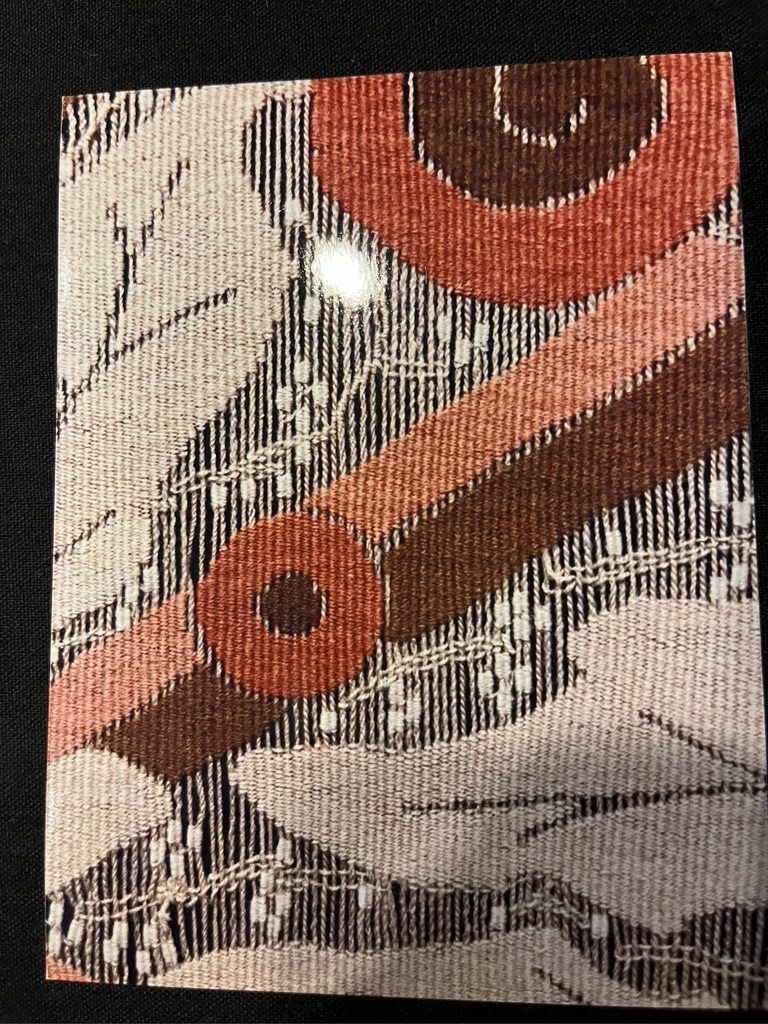
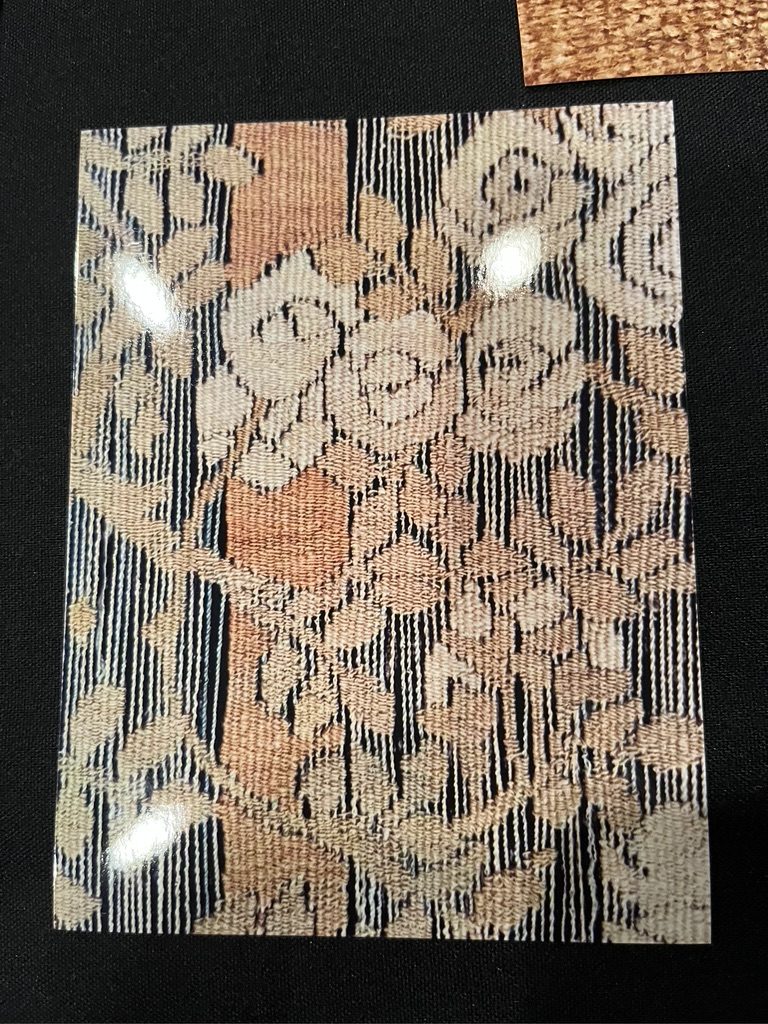
Robbie LaFleur has done quite a bit experimenting with this technique. I thought each woven shape must have been soumaked to hold it in place, but no! Wool warp and wool weft are just clinging to each other in their inherently wooly way. Seeing actual tapestries done in this technique showed how beautifully supple the fabric can be.
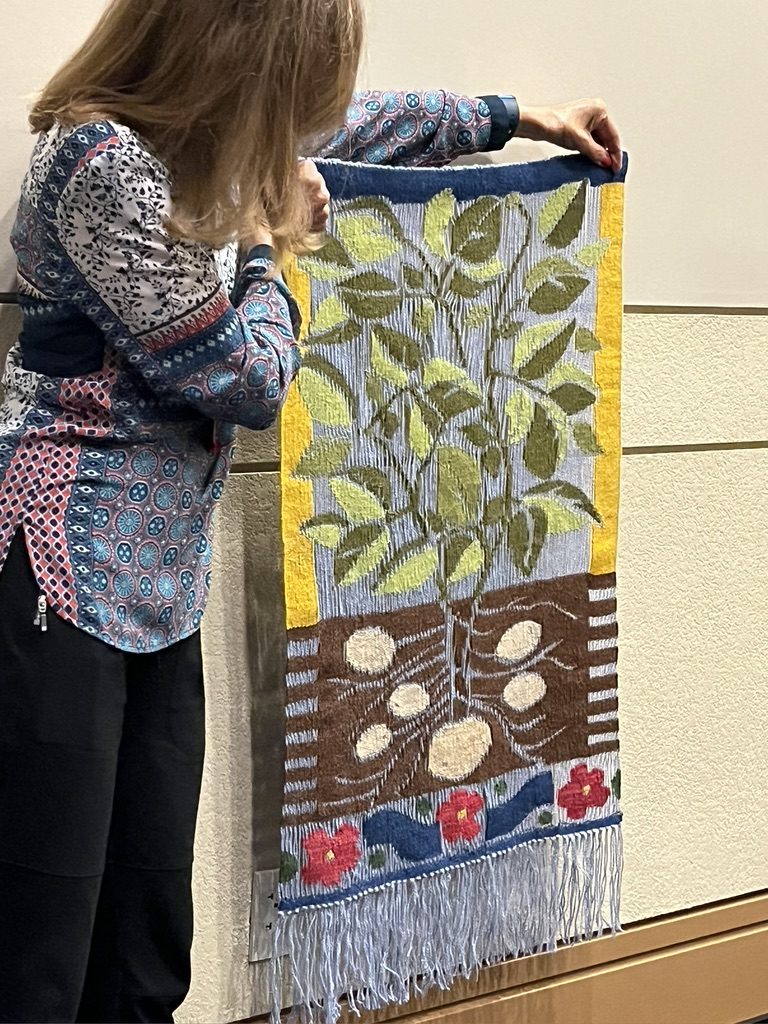
Knoxville is a charming city, part of a larger area that includes Ashville, NC, and Gatlinburg, TN, that have many galleries focused on fine craft and art. Walking to Market Square was easy from the conference hotel, and there was much to see! The exhibits that were related to Convergence were “Small Expressions,” hosted by HGA; “Tiny but Mighty,” hosted by American Tapestry Alliance; “Complexities,” hosted by Complex Weavers; and a lovely show works from members of the seven weaving guilds throughout Tennessee. Kari and I spent a wonderful day touring these exhibits. I have loads of photos, but I bet you’ll see a lot of these in the upcoming issue of “Shuttle, Spindle and Dyepot.” I can’t resist a photo of Kari and me having a cool adult beverage on a very hot Knoxville afternoon!
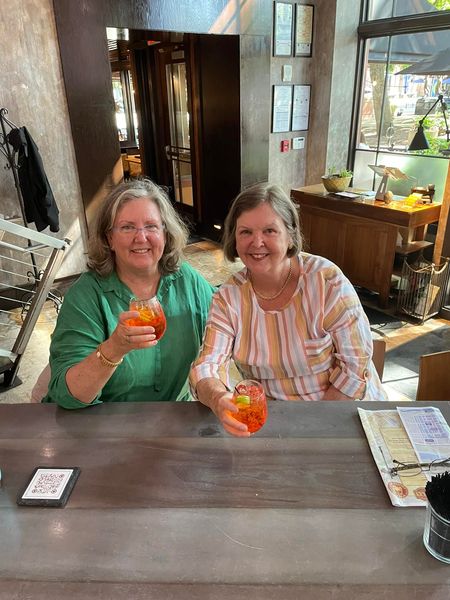
I knew that Scottish tapestry weaver Fiona Hutchison was at Convergence, but I never bumped into her during the conference. In March I had entered a lottery to take a workshop with her just three days after Convergence ended–in Massachusetts. It was a hurdle to drive home–not to Baltimore where my friend and I started our journey–but to Connecticut! I had only 36 hours to unpack, do laundry, and gather all my materials before heading out for a 3-day workshop with Fiona at Rolling Ridge Conference Center in North Andover.
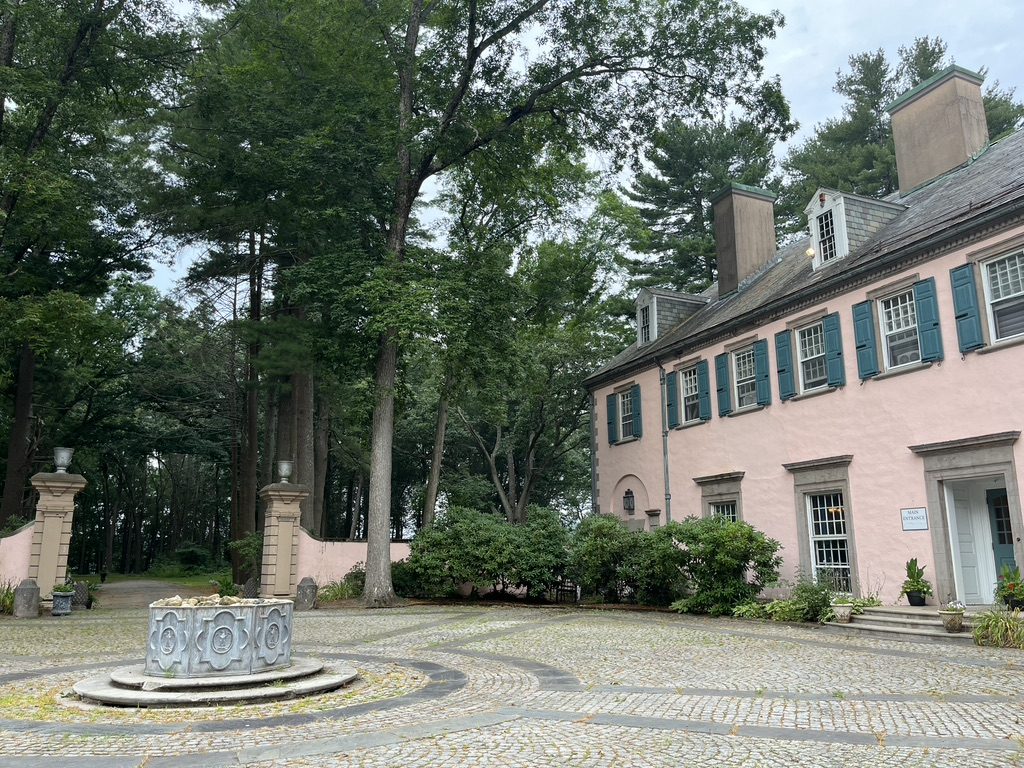
Here is our group of twelve lucky participants. Fiona is in the second row, second from the right.
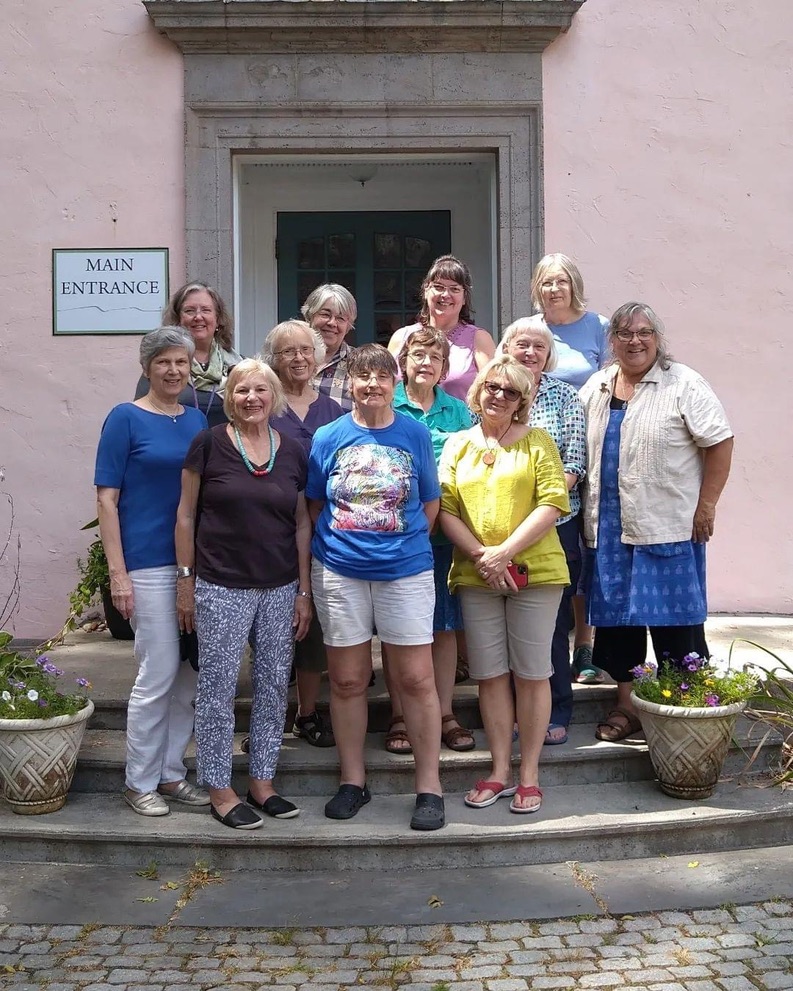
Fiona’s work is so interesting! It was a challenging and inspiring three days making samples of just a few of her many techniques to bring tapestry off the grid and create such interesting fabrics.
Here are some of Fiona’s woven samples of techniques. Here she has taken one warp and woven separate small sections of differing lengths and differing numbers of warp threads. She has left the linen weft ends exposed for a textural effect. Off the loom she pulls the warps to create all these small undulations.
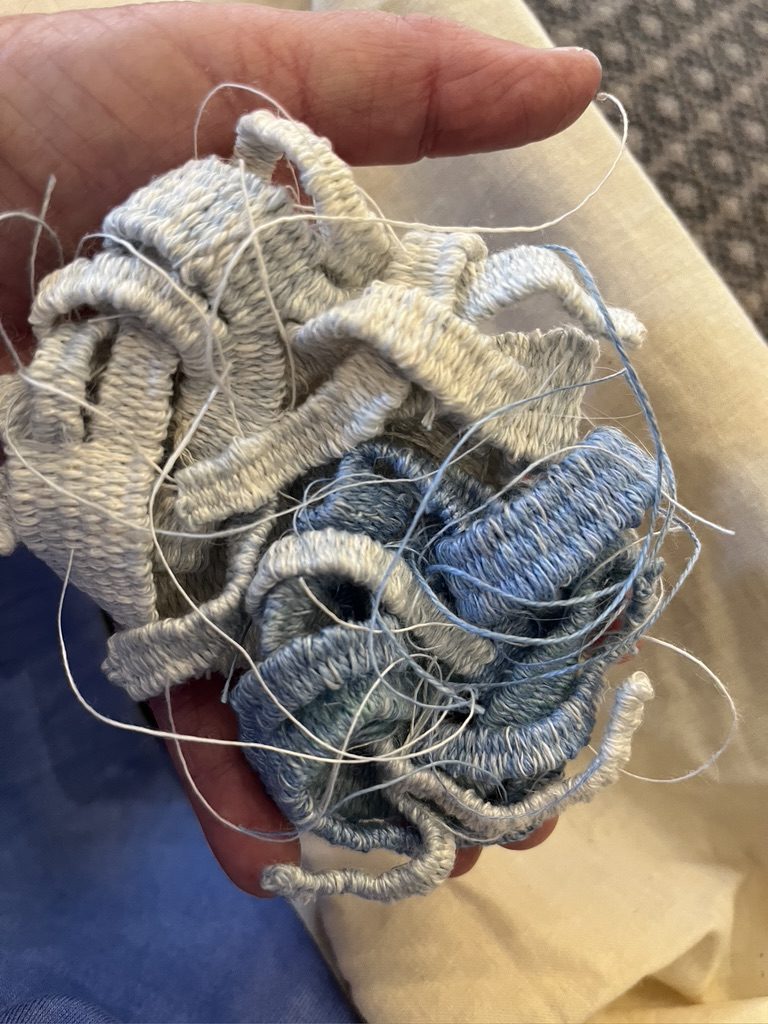
This is my sample of what the weaving looks like before being cut from the loom and manipulated into undulations.
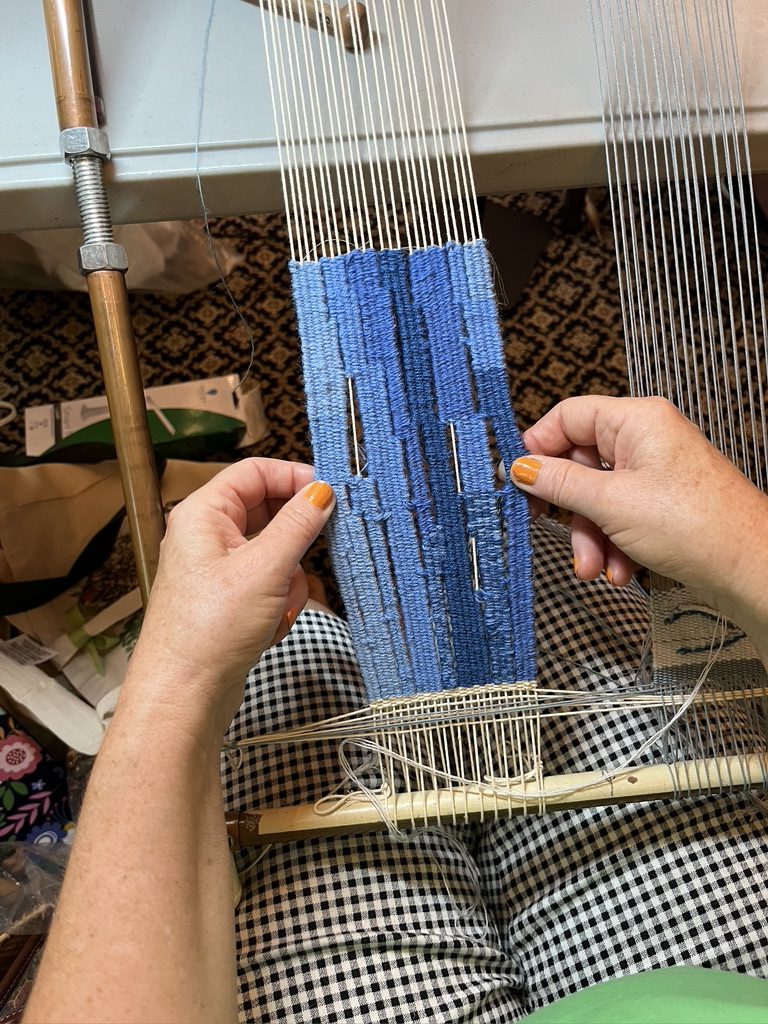
Here are a number of different techniques woven by Fiona, displayed together for us to see.
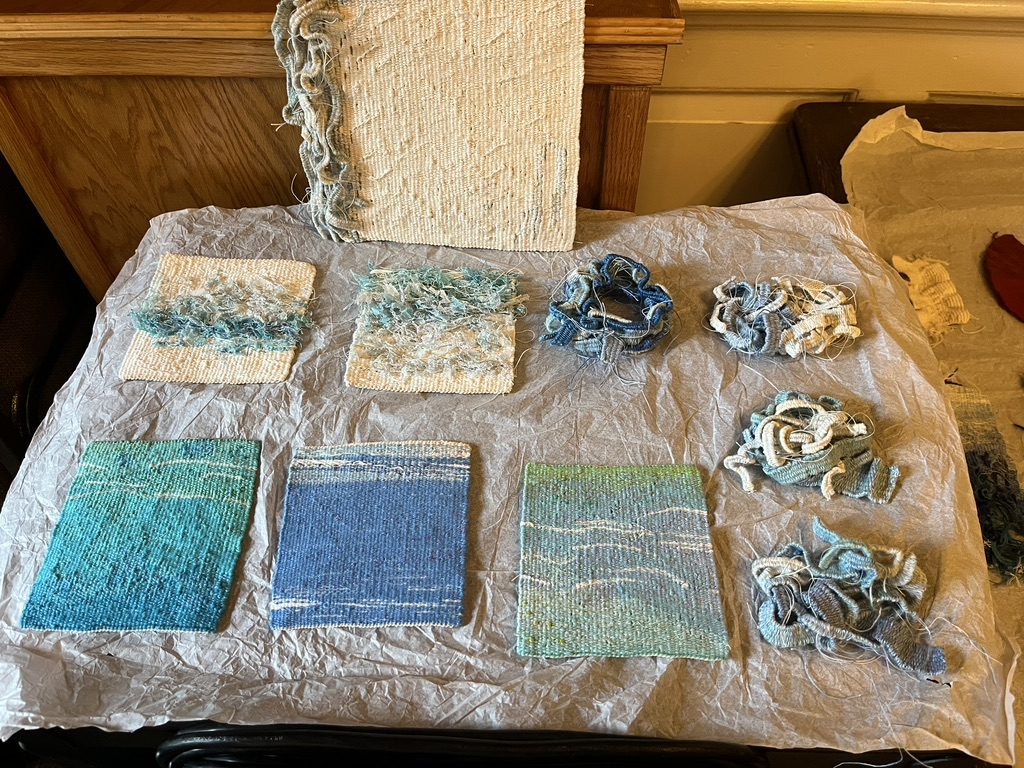
Twisted warps and supplemental warps make this very interesting sample.
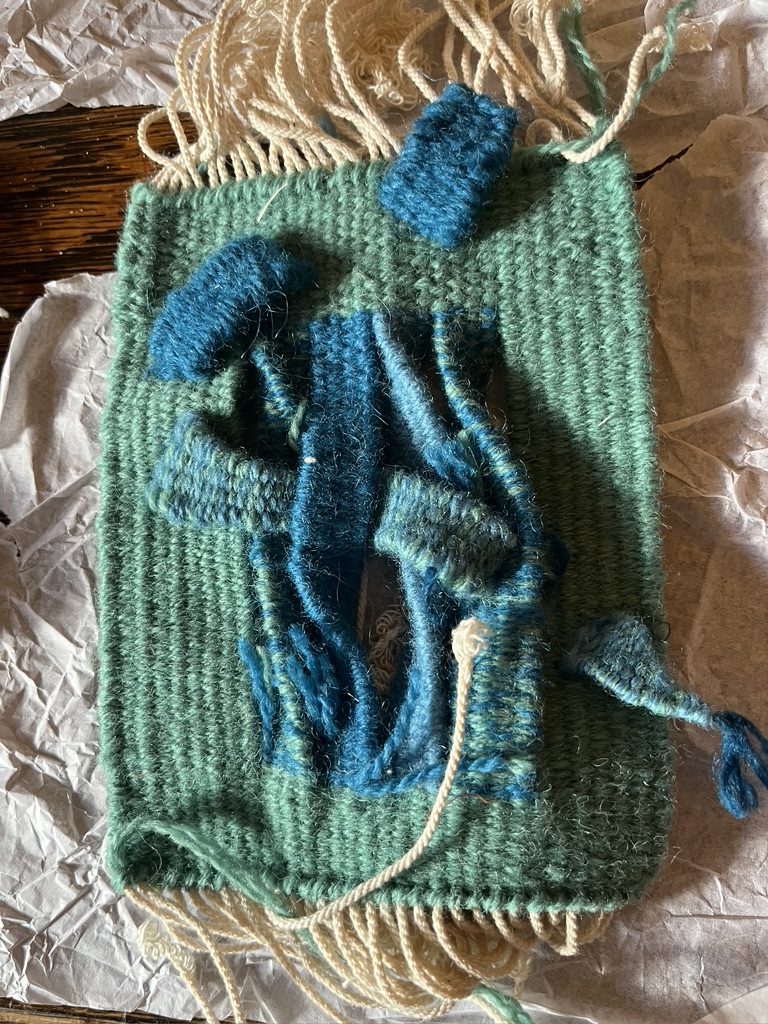
At various points during the day we had time to explore the grounds. We all loved the views of the reservoir.
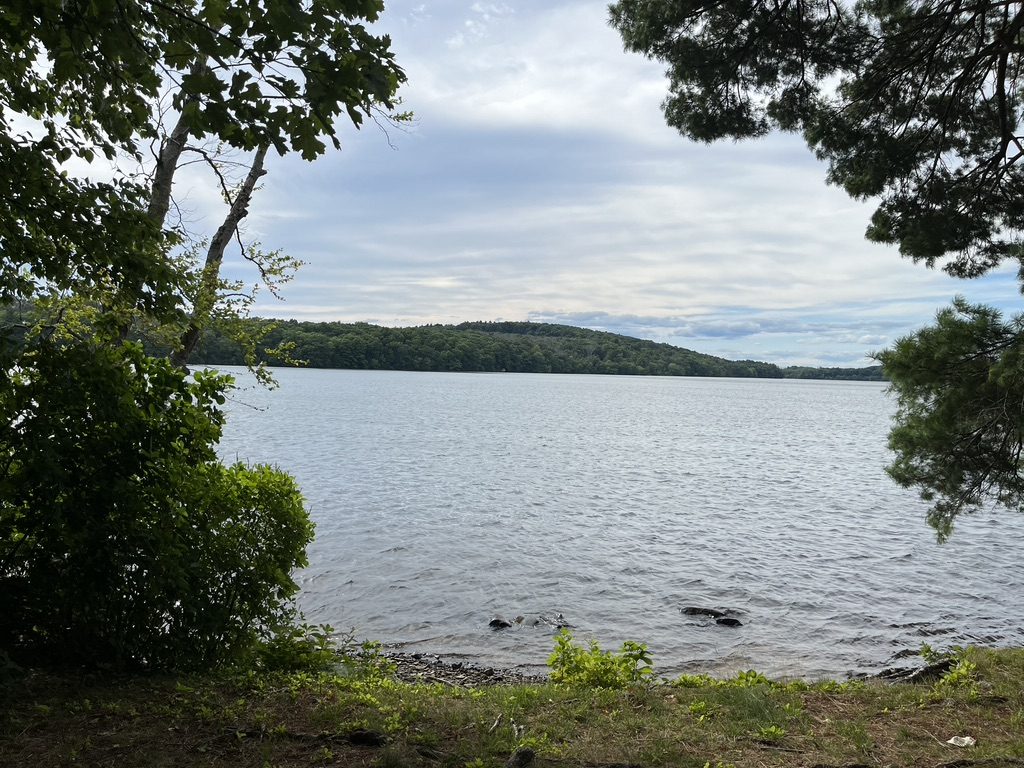
The Center used to be a Methodist retreat center (perhaps it still is), and there is a chapel at the water’s edge. The workshop was a magical three days of hard work and terrific inspiration, with good food and a picturesque location thrown in for good measure.
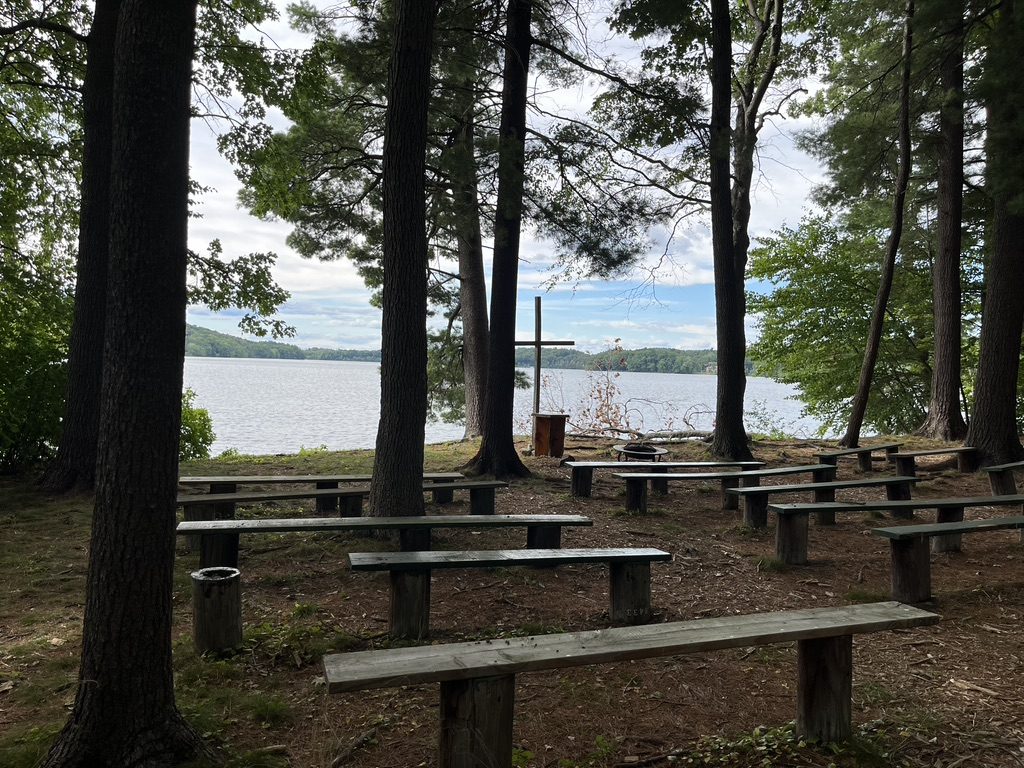
Back at home, exhausted from so much artistic exposure, I had only a few days to get ready for my own class on beginning tapestry. I had eight students who stuck with me on the roller coaster ride to learn some fiddly techniques that I call a ” tapestry weaver’s toolkit.” We focused on opposing sheds, making lots of small shapes and adjusting the tension at those little selvedges, then headed into angles, curves, and circles. The students worked hard to get all that info in three long days. On the last day we had a tour of the historic mill where Hartford Artisans has class space full of light and beautiful views out the huge mill windows in Manchester. It’s a room full of floor looms with a great view!
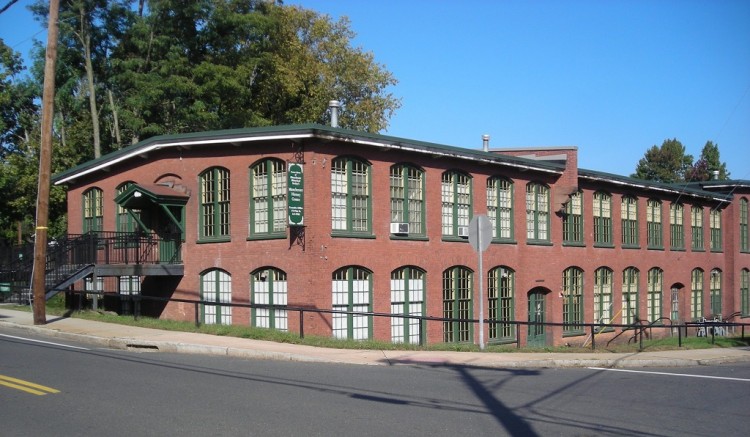
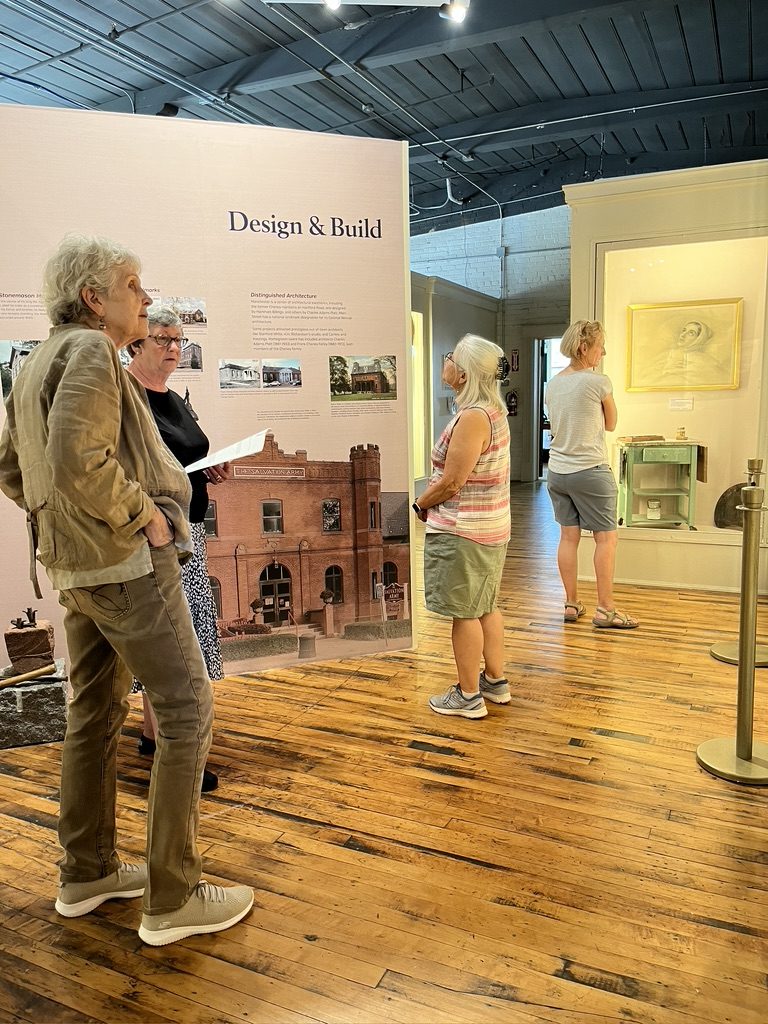
As I’ve been writing this I have received an update from Robbie Lafleur about our Frida Hansen class. She calls it ‘Borders and Edges.’ I’m off to read that and learn more. It’s been a whirlwind, especially during July, but I’m living the experiences I dreamed about last winter!

